- Skip to main content
- Skip to primary sidebar

Wilderness Inquiry
Share the adventure!

We're happy to answer any questions you have!
- Name * First Last
- Comment or Question(s)? *
- Subscribe to News and Updates
- Are you a robot?
- Email This field is for validation purposes and should be left unchanged.

Boundary Waters Canoe Area
Paddle million-acre wilderness.
The Boundary Waters Canoe Area Wilderness is America’s premier canoe destination. It is also one of the most accessible wilderness areas in the United States, and where Wilderness Inquiry began operating in the 1970s. Over one million acres in size, the Boundary Waters covers much of the Superior National Forest in northeastern Minnesota. Paddle among towering pines in the home of moose, lynx, wolves, and bald eagles.
Every Wilderness Inquiry trip ensures your adventure is the best it can be. Decades of experience in combination with top notch food and gear make Wilderness Inquiry BWCA trips an exceptional value. Our classic 5-day Boundary Waters Canoe Area Paddle Adventure is the quintessential guided canoe trip . Paddle lightweight Wenonah kevlar canoes and camp in beautiful lakeside campsites. The Boundary Waters lodge based adventure is based out of stunning Wintergreen Lodge on White Iron Lake. From here, you’ll enjoy excellent BWCA day trips off the Kawishiwi River or the Fernberg Trail, returning to delicious meals, a glass of wine, and a comfortable bed at night. The Boundary Waters Family Canoe and Hike trip is geared for families and based at a Forest Service campsite, allowing us to do day trips in smaller groups into the Wilderness. Our Boundary Waters Winter Adventure changes it up for winter fun at Camp Menogyn on West Bearskin Lake. You will love dogsledding, skiing, and seeing the Wilderness dressed in its winter clothes.
Whatever Boundary Waters trip you choose, we know you will enjoy this iconic wilderness area and come to understand why it is beloved by so many.
View by Itinerary
View by date.
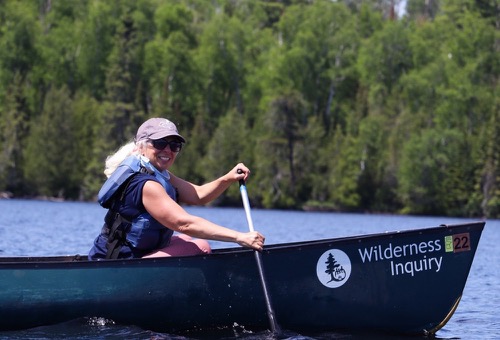
Boundary Waters Canoe Area Paddle Adventure
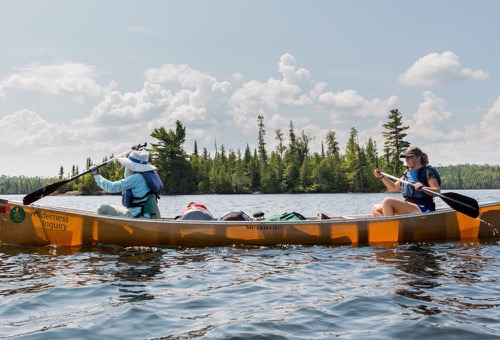
Boundary Waters Base Camp Adventure
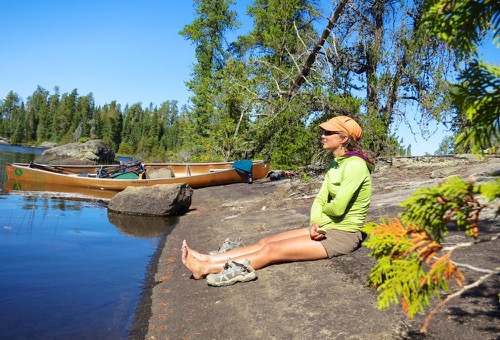
Boundary Waters Canoe Area Expedition
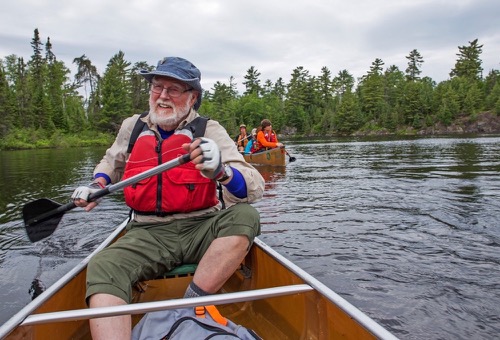
Boundary Waters Lodge-Based Adventure
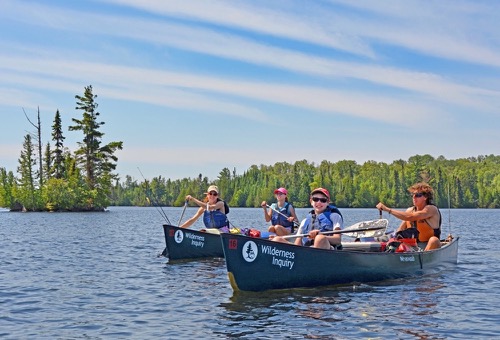
Boundary Waters Family Canoe and Hike
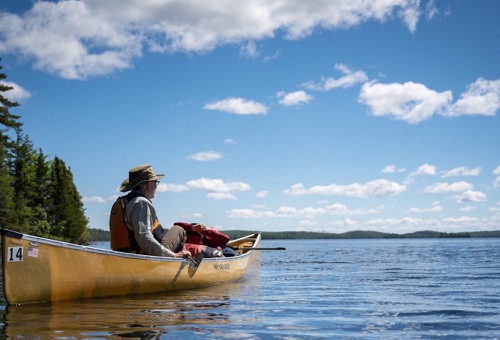
Boundary Waters Lodge-Based Reader’s Retreat with William Kent Krueger
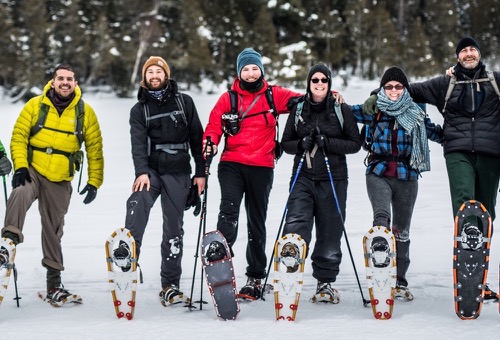
Boundary Waters Winter Adventure
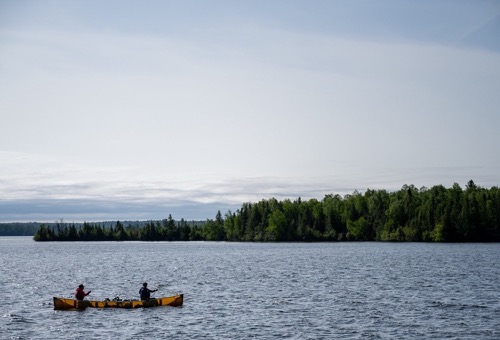
Boundary Waters Base Camp: Potlikker and Smoke with Chef Lachelle
About the area.
In 1964, Congress designated the BWCA as one of the first federally protected wilderness areas in the United States as part of the National Wilderness Preservation System. The BWCA, the northern third of Superior National Forest, lies on the international border between northern Minnesota and the Province of Ontario, Canada. Together, with the adjoining 1.2 million-acre Quetico Provincial Park on the Ontario side of the border, this international wilderness complex forms an unparalleled lakeland complex of 2.3 million acres, an area larger than Yellowstone.
Sculpted by glaciation, the area is part of the Canadian Shield, a geological formation that comprises portions of the earth’s most ancient exposed rock, some of which is 3 billion years old! The Boundary Waters contains about 1,175 lakes in all, creating a maze of interconnected wilderness waterways to explore. Whether you paddle one of the larger border lakes – Saganaga, Knife, Basswood, Crooked, Lac La Croix – or one of the smaller more intimate lakes, you’ll experience an undeveloped wilderness that appears much the same as it has for hundreds of years. Each lake brings its own distinct personality and you may find you and your canoeing partners each have a different favorite.
Two types of forests, the Boreal and Laurentian forests, converge to create a unique ecosystem with diverse plant and animal life in the Boundary Waters. Animals that would not normally be seen together, such as the white-tailed deer and the moose, have made the BWCA their homes. Many birds, such as bald eagles & loons, and over 20 species of wood warblers, use the Boundary Waters as their nesting grounds. Anglers can test their skills against the area’s lake trout, walleye, northern pike, or small and largemouth bass.
Humans have left their mark on the Boundary Waters as well. Native peoples inhabited the Boundary Waters area for thousands of years, with some human relics dating back to 10,000 BC. The Anishinabe (sometimes called Ojibwe, or Chippewa) and Dakota (Sioux) used the intricate waterways of the BWCA for hundreds of years. Native peoples first used many of the campsites and portages (paths between lakes) still used today. Artifacts from that period can still be found on occasion. European fur traders and missionaries first came into the area in the early 1700s. A working relationship developed between the European fur traders and the Ojibwe, based on trade of European goods for native knowledge and furs. This partnership ended in the mid 19th century due to the declining interest in furs as fashion.
Fur trading and logging of the Boundary Waters began taking its toll on the fragile ecosystem. People decided to act, setting aside this pristine area and working to protect it from further harm. In 1909, President Teddy Roosevelt established the Superior National Forest, with 1,000 square miles of roadless land (the precursor to the BWCA) later set aside in 1926 as the nation’s second administratively-established wilderness. The 1964 Wilderness Act designated the Boundary Waters as an original unit of the National Wilderness Preservation System, but with some compromises that allowed logging and motorboats to continue there. Congress passed additional protections for the BWCA in 1978, and expanded the area to its current borders and size of 1.1 million acres. The controversy surrounding this Congressional effort for the Boundary Waters also led to the establishment of Wilderness Inquiry; WI began by taking canoe trips in the BWCA and continues doing so to this day.
The Boundary Waters is one of National Geographic Traveler magazine’s “50 Places of a Lifetime.” Situated within Superior National Forest in northeastern Minnesota, the Boundary Waters Canoe Area Wilderness is a vast preserve of lakes and woods that stretches for about 100 miles along the U.S. border with Canada. Spread within the Boundary Waters are over 1,500 miles of canoe routes over more than 1,000 lakes, rivers and streams linked by trails called “portages.”
Due to strict permitting and non-motorized status the wilderness is yours to explore without people or vehicles. These factors contribute to the serenity of the area creating the perfect location for canoeing.
Camping for families
The wilderness is and ideal setting for families. Without the noise of daily life expect to learn more about yourselves and each other. The Boundary Waters Family Canoe and Hike trip is geared for families and based at a Forest Service campsite, allowing us to do day trips in smaller groups into the Wilderness.
Adventurers
Our classic 5-day Boundary Waters Canoe Area Paddle Adventure is the quintessential guided canoe trip for adventurers of all ability levels. Our experienced guides will teach you basic paddle strokes, the art of portaging a canoe, and can help you find a new appreciation for the great Northwoods.
- Login
- Sign Up!
- Messageboard
Social Login
- Login with Facebook
- Login with Twitter
Forgot your password? Don't have an account yet? Sign up
Boundary Waters Trip Planning Info
Basic Rules & Information
BWCA Permit & Information
Checklist & Trip Planning
Gear Rental & Outfitters
Resorts, Cabins & Camping

- Boundary Waters Canoe Area
- Follow
- Messageboard
Boundary Waters Guide Service
Ely/western bwca and sawbill.

529 E. Sheridan St. Ely, MN 55731 View Location on Map
Contact Information:
Direct Phone: 218-343-7951 Email: [email protected]
Boundary Waters Guide Service provides fully outfitted and professionally guided BWCAW canoe camping and day trip adventures for families and friends. Our trips include knowledgeable, cheerful, local guides. Our guides make the difference. We unlock the mysteries of the Boundary Waters by sharing paddling and camping skills, fishing know-how, local history, and a naturalist perspective. Let us skillfully craft your itinerary and take you off the beaten path to hidden places where you discover the unexpected. Many of our guides are year-round professional guides who spend winters leading dog sledding trips over frozen boundary waters canoe routes. We love sharing the Boundary Waters with people!
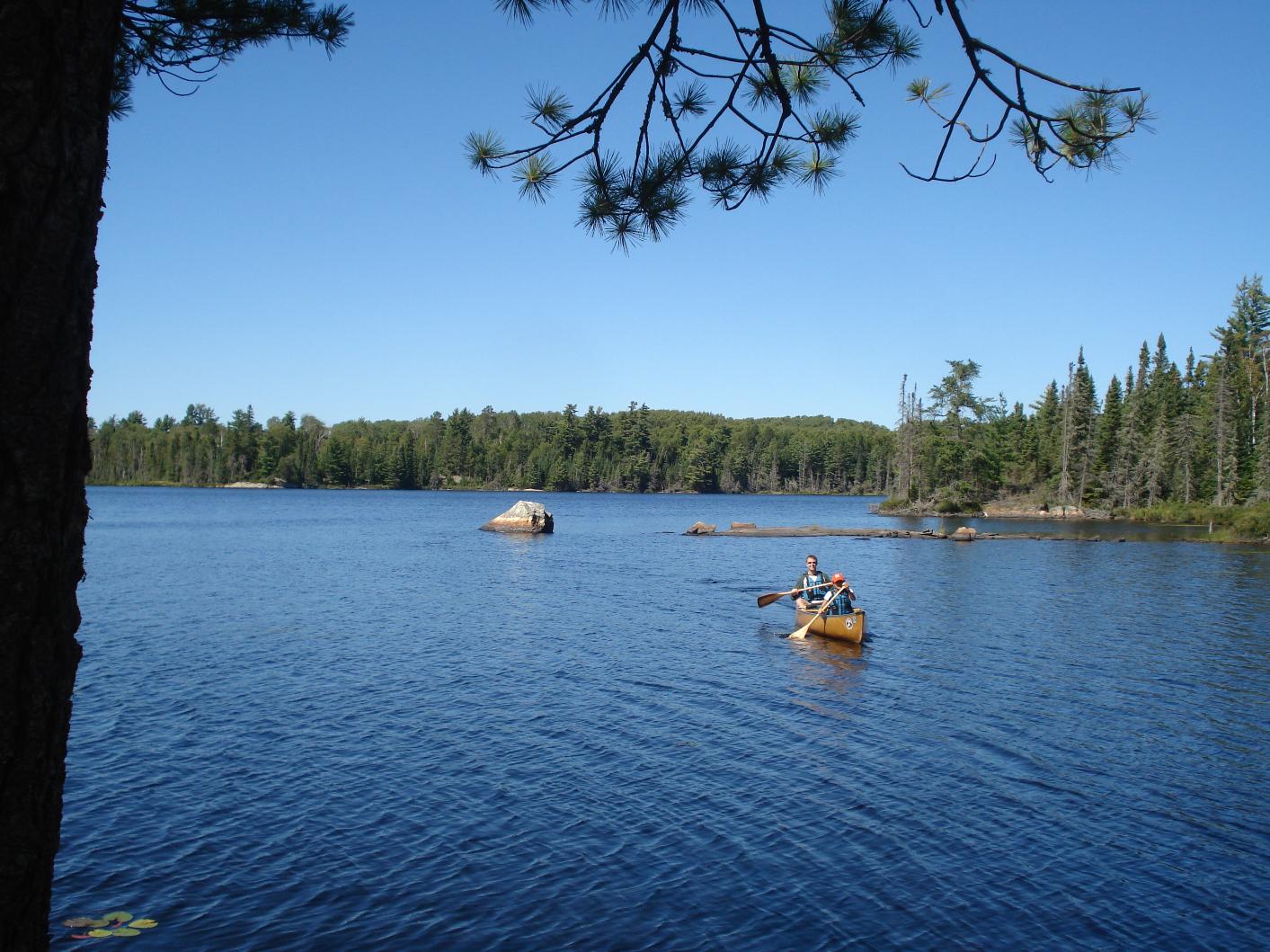
Main Offerings:
- Full Outfitting - Fully outfitted and professionally guided canoe camping and day trips.
- Gear Rental - Included in each guided trip.
- Trip/Route Planning Assistance - Included in each guided trip.
- Entry Point Shuttles - Shuttles to and from entry points.
- Guide Service - Guiding Trips into BWCA
- BWCA Permits - Reserve Permits for your group
- Canoe Rental - Included in each guided trip.
- Meal Planning - Included in each guided trip.
- Bunkhouse - Bunkhouse available for pre/post trip lodging
- Quetico Outfitting
Help keep support this community and website with the many resources it provides and maintains. Learn more
We use cookies to enhance your experience, for analytics, and to support 3rd party content and advertising providers. If you continue using this website, you agree to our privacy and legal agreement . Ok
- Plan A Canoe Trip
- Full Outfitting
- Canoe Rental & Partial Outfitting
- Permits, RABC, & Other Forms
- Guided Canoe Trips
- Piragis Guided Group Trips
- Canoe Trip Menu
- Scouts & Organizations
- Satellite Phones and SPOT Texting Devices
- Fly In Trips, Shuttles, & Tows
- Used Equipment For Sale
- Winter Rentals and Guides
- Canoe Trip Packing List
- Why Choose Piragis Outfitting?
- What is the Boundary Waters?
- Boundary Waters vs Quetico
- Quetico Information
- What is a Canoe Trip?
- Why Wilderness Matters
- Seasons of the Ely Area
- Average Ely Area Weather
- Pictographs
- Other Area Activities
- Boundary Waters Fishing
- Wenonah Canoes
- Northstar Canoes
- Delta Kayaks
- Perception Kayaks
- Wilderness Systems Kayaks
- Pakboats (Folding Canoes & Kayaks)
- Used Canoes, Kayaks & SUPs
- Canoe Repair
- In Stock New Canoes
- Winter Rentals
Guided Trips
Guided boundary waters canoe trips and tours, ely mn.
Looking for the best experience the Boundary Waters has to offer? Take one of our wilderness guides along. Their knowledge and passion are contagious. They’ll help you get the most out of your wilderness adventure and teach you the skills necessary for future Boundary Waters trips.
Whether you are planning on a day trip, short overnight trip, or a longer adventure, our guides are available to accommodate your needs. We are flexible and fully customizable. See all our exciting trip options below.
Contact Drew, Adam, or Tim Barton with questions:

Guided Camping Trips
Personalized guided canoe camping trip. Bring your family and friends for the adventure of a lifetime.

Guided Day Trips
Spend the day in the BWCAW with one of our expert guides. See the sights and enjoy the wilderness. Don’t forget your camera.

Guided Group Trips
Sign up for one of our themed guided trips. Meet new friends from all over the country and enjoy this wonderful wilderness.

Guided Fishing Trips
Looking for lunkers? Bring one of our expert guides along for the fishing experience of a lifetime. Day trips and overnight trips available.
Prove It First: Commonsense Protection For The Boundary Waters & Lake Superior. Take Action
Planning your trip to the Boundary Waters (A Step-by-Step Guide)
February 12, 2020 Recreation
I want to go to the Boundary Waters, but where do I begin?
That’s a question we hear a lot. If you’ve never planned your own trip, knowing which levers to pull to get the gears in motion can be daunting. It doesn’t have to be! Planning a trip into the BWCA should be fun, not overwhelming.
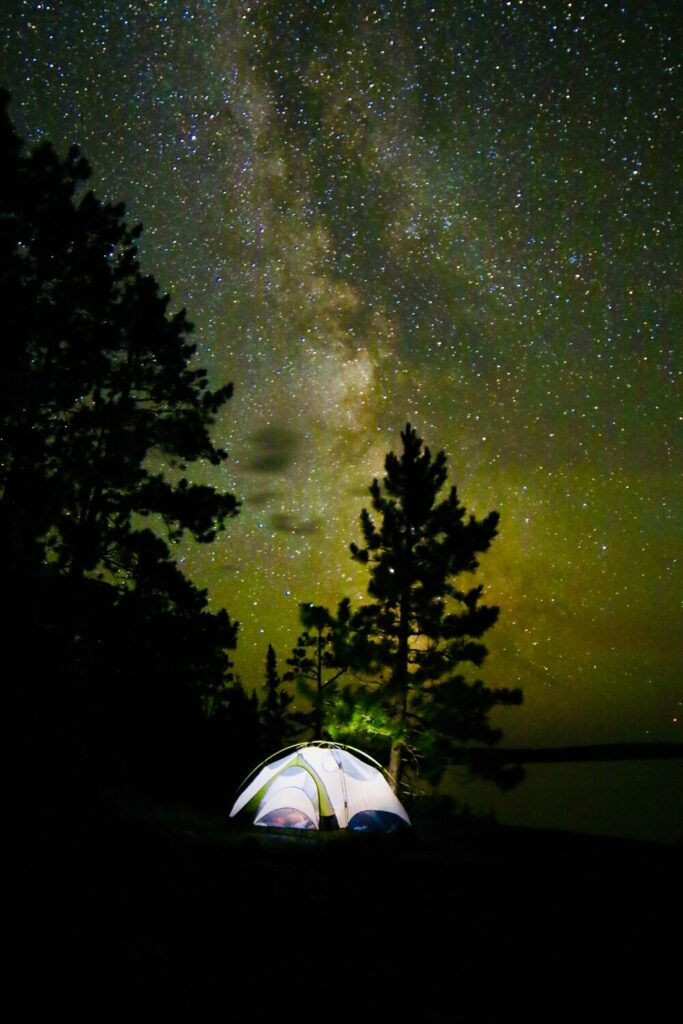
We went ahead and broke down the components of the trip-planning process and put it into an easy-to-follow timeline.
This isn’t a one-size-fits-all timeline; think of it as an overview, a handy guide that can be adapted to various situation, whether you get started planning months in advance, or if you get a permit a couple weeks before your trip is to start.
That being said, we built this timeline with the assumption that you and your party will be traveling during “the season,” from May 1 to September 30, when you are required to have an overnight camping permit.
Let’s begin here, with securing a permit and making sure you get to go to the place you want to explore.
January: Decide on an entry point and reserve your permit
Yes, this is early, and for procrastinators and those who like to fly by the seat of their pants, pack the car one night, and be out on the water the next, planning this far in advance may be well near impossible.
But, if there is a specific route you want to paddle , a specific area you want to explore, or you just want the peace of mind of taking care of the permit side of things, you better start early.
Reservations for BWCA permits open on January 29, 2020. To ensure you’ll be able to get in at your preferred entry point, on your preferred days, you should be ready to reserve your permit on the first day they are available.
Before you do this, you’ll need to get together with your friends and paddling partners (bring your maps) and decide on an entry point and a start date. You don’t have to have your entire crew formed (maybe your cousin Larry is still waffling. That’s okay. For now). As long as you have a core group of one or two other people, you’ll be set. The details of your route, such as where you will go from the entry point and for how long, can be worked out later.
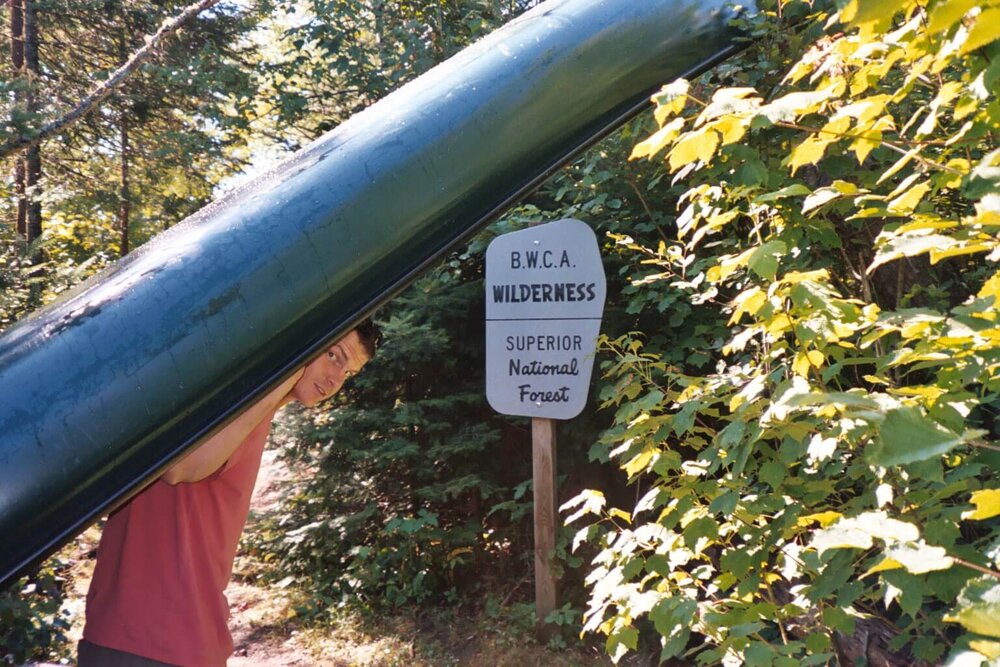
The important thing is to be ready to reserve your permit early (have you marked January 29 on your calendar yet?). While it’s more than possible to get an overnight paddling permit even a week before a trip, that’s a big maybe. As time goes on and others snatch up permits, the pickings will be slim.
There’s another, equally good reason for securing your permit early: All too often, we hear about people “wanting” to do a Boundary Waters canoe trip , and for no reason besides the fact that it’s easy to let the time slip away, they end up not going. The sooner you and your crew can hammer down a date, clear your calendars, and get the time off from work, the better.
Three months before you leave
From the time you reserve your permit to the time you get the crew together for a meeting (which can be over the phone, by Skype, etc.), you may have gained a few crew members or had others drop out.
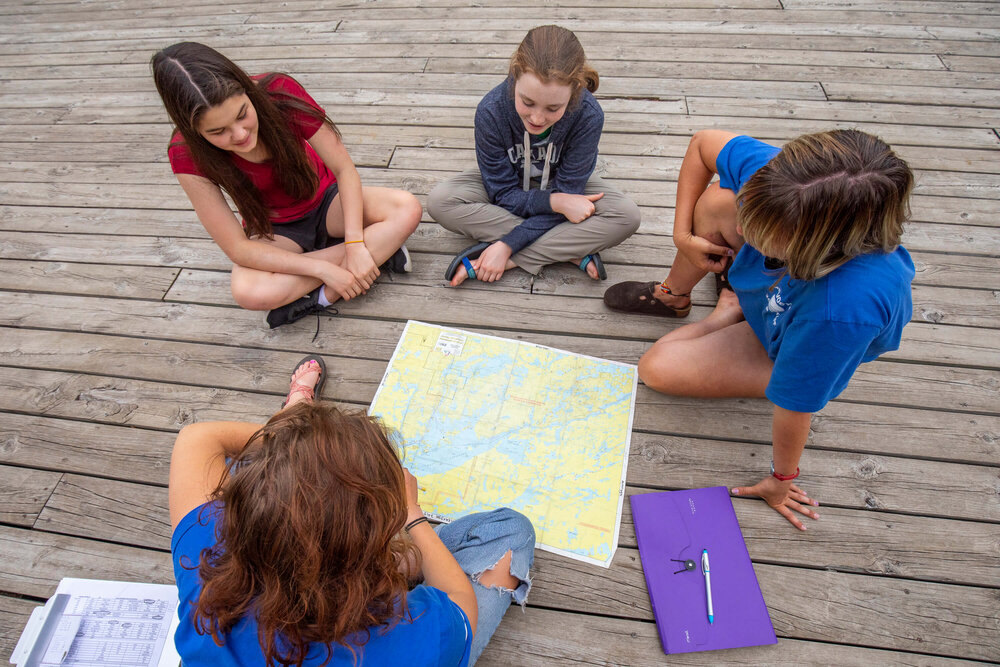
This first meeting, which should happen about three months before your trip, will cover some important ground. Here are a check list of things to go over:
- What is the purpose of the trip? There are many ways to enjoy the Boundary Waters . To make sure everyone gets the most out of the trip, it’s important to set expectations before you leave. Is the goal to cover a lot of ground? Is it to fish? Explore the geology of the area? To sleep in late and relax? Knowing this will help you decide on a route and do wonders for team dynamics.
- Hash out the route. How long will you be out? How many miles per day do you hope to travel? How many rest days should you schedule? Once you decide on your end date, everyone in the group must make sure they have that time available. One or two days after the meeting they should put in a request for time off, get an okay from their significant other, etc.
- Do you want to spend time in Ely or Grand Marais before or after the trip? Many people like to book accommodations in town and gorge on burgers and fries after a few days in the wilderness.
- Transportation. Who can drive? How much can their vehicle carry?
- Group gear. Take a look at the this gear checklist and figure out what group gear you will need, such as a tent, canoe, tarp, stove, packs, etc. Who in the group can provide this gear? If you need something, there are a number of outfitters surrounding the Boundary Waters who can rent the gear your crew needs.
- Make a plan to purchase needed gear and/ or contact outfitters about renting gear or canoes.
- Make sure that when it comes to renting group gear or purchasing group food that people save their receipts and that your party has an understanding about how expenses will be shared.
- Other things to discuss are: Experience levels of those who are going, if anyone has medical training, physical limitations, food allergies and other relevant concerns.
Two months before you leave
60 days before your trip, you should:
Decide on a menu and split up food-buying duties. Make one person responsible for buying all the breakfast food, another for lunch , and a third for dinner.
Make reservations for any gear you might need with the outfitter of your choice.
Book rooms in town (if needed) for both before and after your trip.
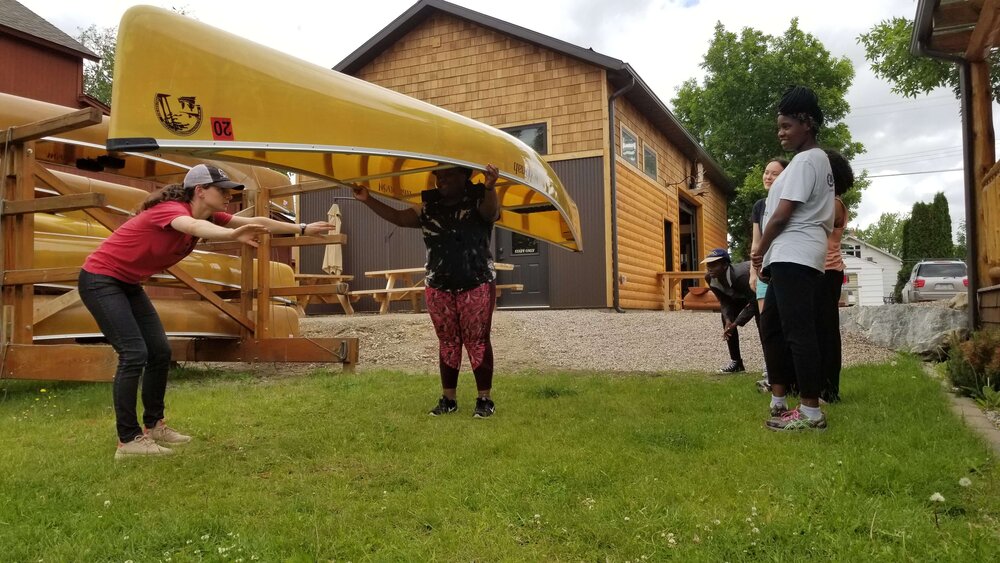
One month before you leave for the Boundary Waters
- Have all the non-perishable food packed and ready (perishable foods can wait)
- Have your route and itinerary written down and share it with family, friends.
- Load up contacts in your satellite communications device (SPOT or InReach, if you are bringing one) with the appropriate contacts
- Make an inventory of all your personal gear, and a list of everything you might need
- Have all your group accounted for. You either have it or have plans to get it.
Two weeks to go:
Make that last-minute shopping trip to pick up the bug net you can’t find, a spare pair of socks, or anything else you might need.
During the week before you leave…
- Get all the group gear and everyone’s personal gear together and do a final check. Do you have toilet paper? Matches?
- Purchase perishable foods (if you bring any) and have it ready to go the day you leave for the northland.
- Have your trail clothes that you will change into before hitting the water ready. It’s nice to drive up in some “civvies” and have them there to change into when you get off trail.
- Have the vehicle(s) gassed up and packed up the night before so you’re ready to go in the morning.
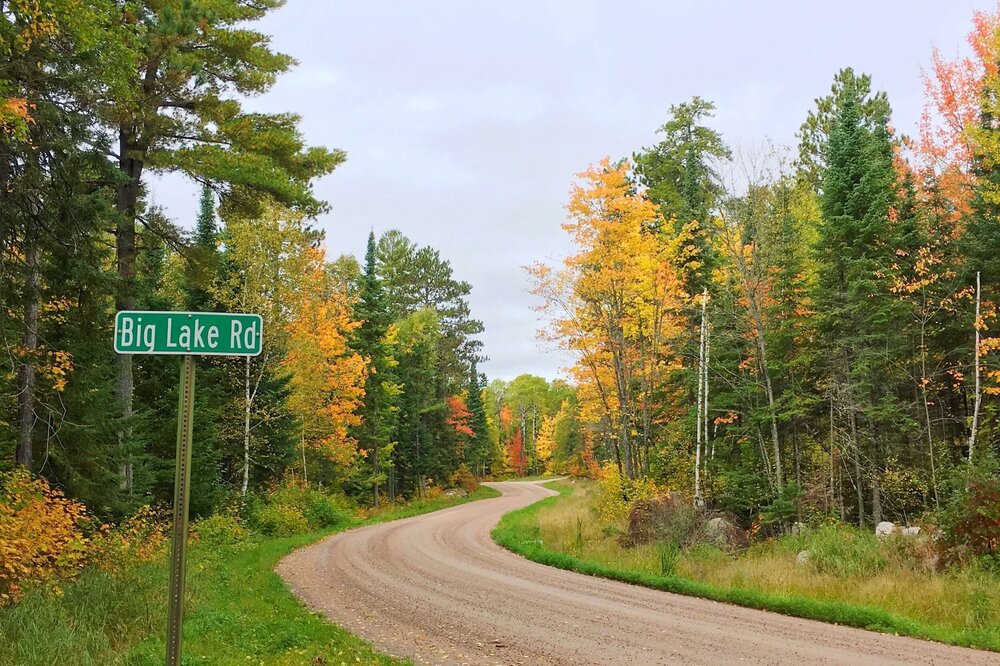
Like we said, this isn’t an absolute plan. People drop out at the last minute, friends pop up wanting to go, and some people like the crunch of planning and packing for a trip in three days.
However you do it, remember, there is a post-trip component as well.
This generally includes:
- A burger and a few beers
- The dreaded moment you check your emails
- Cleaning up all the gear
- Settling accounts (gas, etc.)
- Discussing where to paddle next year…or next month
Comments (0)
Do your part to protect the boundary waters, continue reading, fighting to protect clean water and the bwca at the capitol.
There has not been a legislative hearing on sulfide mining in over a decade. We're working to change that and…
From the Boundary Waters to the Iditarod
Follow a young woman’s journey from dog sledding in the Boundary Waters to racing in the Iditarod, the most famous…
Cross Country Skiing in the Boundary Waters
Some of the best cross country skiing in the country is in or around the Boundary Waters. Learn more about…

How to Plan a Boundary Waters Canoe Trip in Minnesota
Start planning your Minnesota Boundary Waters canoe trip with this complete guide including BWCA entry points, Boundary Water camping, & more

Planning a Boundary Waters canoe trip in the Boundary Waters Canoe Area Wilderness (BWCA) involves navigating a labyrinth of over 1,000 lakes and islands. Located on the Minnesota/Canada border, I’ve made countless trips to the BWCA ever since I was a kid and it always delivers when I want a quiet week filled with great views and adventure.
The BWCA is the most-visited wilderness area in the U.S. and for good reason. From short overnight trips to multi-week remote adventures, the BWCA offers a unique camping experience for all skill levels. Like most remote camping trips, though, canoeing the BWCA requires planning in order to secure permits, learn how to navigate lakes and make portages, and assemble the right gear for a successful trip. I’ve made many trips to the BWCA, so in this post, I’m sharing all the important tips and guidance you’ll need to have a successful trip in Minnesota’s great north woods.
In this Boundary Waters canoe trip guide, I share everything you need to know to plan your own canoeing adventure to this amazing and remote area.
Important Reminder: As outdoor recreationists, it’s our responsibility to know how to recreate responsibly on the water whether we’re kayaking, paddleboarding, canoeing, rafting, or boating. Learn how to prevent the spread of aquatic invasive species with 3 easy steps that have a huge impact on our ecosystems.
Best Time to Canoe the Boundary Waters
Since the lakes freeze over in the winter, the best time to canoe the Boundary Waters is between spring, summer, and fall. Typically May through October is the canoeing season.
The summer months are the popular time to go, especially the back half of August. The water is warm enough to swim in and the weather gets up into the 70s and 80s. The main downside to canoeing in the summer months, however, is that mosquitoes and biting flies can put a huge damper on your trip. Bugs peak in mid-June and while the black flies last a week or two, the mosquitos stick around all summer. People share horror stories about the mosquitos, but truthfully they’re not much different than anywhere else in the Midwest.
Visiting during the spring is constrained to the month of May since the lake ice usually doesn’t melt until then. It’s a great month for fishing, solitude, and returning animals and birds, but it can be cold — lows are typically in the 40s.
Fall is one of the best times to visit the BWCA. There are fewer or no bugs, the crowds are basically gone, the fish are returning to the shallow water, and the fall colors are changing. Camping from mid-September to mid-October is the best time to visit if you want to catch the fall foliage as the aspen, birch, and maples leaves begin turning red, orange, and yellow. Make sure to check out these fall camping tips if you plan to visit during this season.
No matter what time of year you visit, it’s important to be prepared for cold temperatures, rainy weather, or submerged and wet gear. Always pack extra warm layers and don’t use cotton.

Planning Your BWCA Route
Bwca entry points.
There are two main BWCA entry points to start your trip: Ely and the Gunflint Trail . In general, the Ely area is quite wooded and has old-growth tree stands you can camp near. Visitors starting in the Gunflint area are likely to see the effects of fires and blowdowns, but while some forests in this area seem more sparse, there’s a more remote, rugged quality to this terrain.
I’ve done a handful of canoe trips out of Ely, but I prefer the Gunflint area for starting a trip because you immediately enter into wilderness with a rugged character.
BWCA Portages
If you’ve never been to the Boundary Waters before, it’s possible you’ve never had to portage a canoe before. Simply put, a portage is when you pick your canoe up and move it overland from one lake to another. The BWCA has over 1,000 lakes connected by portage paths of varying lengths — the shorter and fewer of them on your route, the easier it will be.
Portages are typically measured in rods, which is 16.5 feet long, roughly the length of your canoe. Portaging a canoe isn’t as hard as it seems and it’s actually easy to pick up and carry a canoe by yourself. It has more to do with skill than strength — forget the methods that have you quickly lift the canoe overhead like a powerlifter. Simply follow this method for picking up and carrying the canoe . I’ve seen retired folks do this in the BWCA with no problem at all.
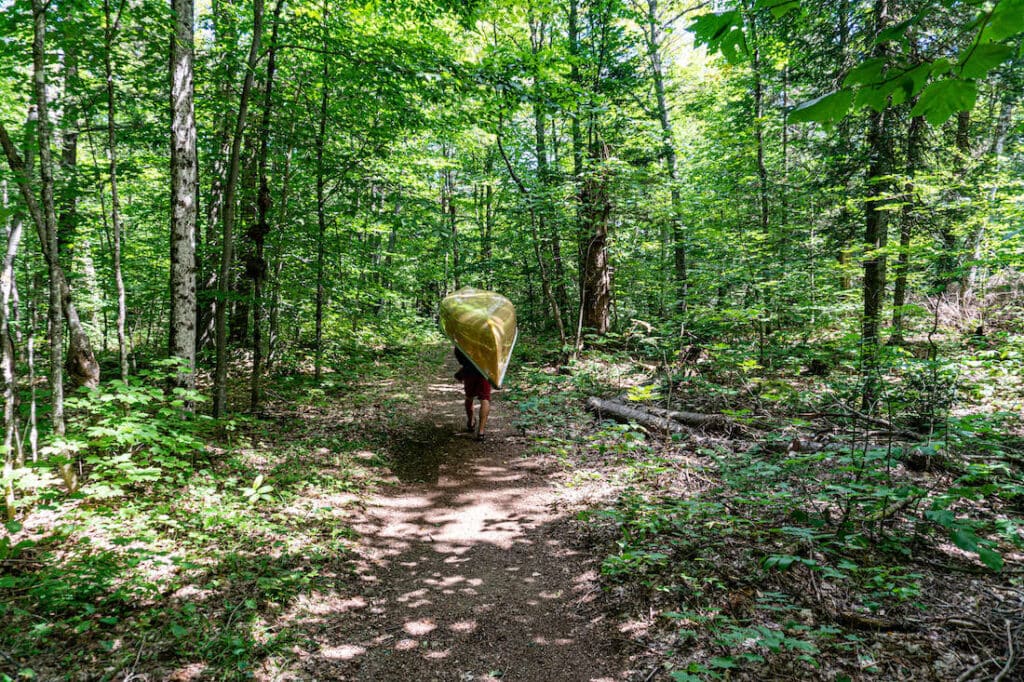
Boundary Waters Route Options
My favorite BWCA route is starting off at the Gunflint Trail at Saganaga Lake and canoeing to Red Rock Lake, Alpine Lake, and Sea Gull Lake to loop back to the start.
There are lots of different route options, though, and you can’t go wrong using the Trip Planner from the Friends of the Boundary Waters Wilderness (more on them later) to cater the route to your trip. You can choose different routes depending on your timeframe, how many portages you’d like to take, how long you want to paddle each day, and your current skill level.
Boundary Waters canoe rentals & Outfitters
While some people bring their own canoes to the BWCA, there are plenty of Boundary Waters canoe rental outfitters in both Ely and the Gunflint Trail. Not only are they inexpensive, but the guides here are a wealth of knowledge for planning your trip, asking questions, and getting some great beta on the best swimming spots and fishing holes. I’ve had great experiences with Voyageur Canoe Outfitters .
Keep in mind that the BWCA is a very large wilderness area, and with so many lakes and islands, you could spend a lifetime exploring different routes. No matter if you choose Ely or Gunflint as your Boundary Waters entry point, you’re going to have a blast.
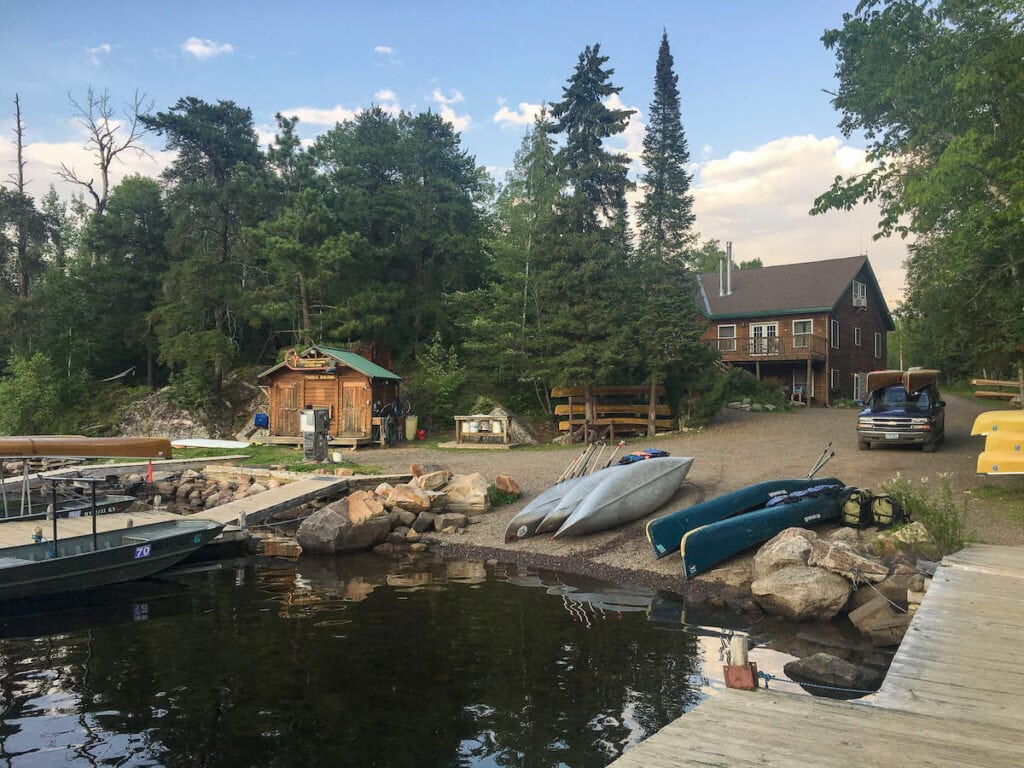
BWCA Permits
Once you’ve decided on where you want to start your trip, you’ll have to secure a BWCA permit. Permits are required for overnight trips from May 1 to September 30 . Walk-up permits are available the day of and the day before your trip, but their availability is not guaranteed. Keep in mind you don’t need to know exactly how many days or how many people are in your party to reserve a permit.
One Boundary Waters permit allows a group of up to 9 people and 4 watercraft to enter the wilderness . You can’t exceed the group limit at any time on water or land. Fees are $16 per adult per trip ($8 per kid per trip), and there’s also a non-refundable $6 reservation fee.
If you plan on fishing, obtain your fishing license before your trip either online or at any gas station/bait shop across the state. If you’re a Minnesota resident, an annual fishing license is $25 or $14 for 72 hours. If you’re a non-resident, it’s $51 annually, $43 for 7 days, or $36 for 72 hours.
The reservation system for Boundary Waters permits opens up at 9 a.m. CT on the last Wednesday of January every year on the BWCA recreation.gov website . If you plan on canoeing outside of the May-September season, you do not need a permit. BWCA canoe rental businesses can also provide permits.
You’ll need to pick up your permits in person at either a Superior National Forest district office or a BWCA outfitter in order to complete the mandatory Leave No Trace & Tread Lightly education session. This is a relatively short video/Q&A session that ensures visitors understand how to minimize their impact in the backcountry and stay safe in the remote wilderness.
While you don’t need a permit to bring a dog into the BWCA, you should bring a current rabies certificate and rabies tag on their collar. Dogs are welcome in the wilderness if they have good voice control, don’t bark or chase wild animals, have experience in a canoe, and are not left unattended . Always be prepared to clean up after your dog.

Boundary Waters Campsites
Boundary Waters campsites are spread throughout the wilderness area and tend to be on wooded shorelines. It’s pretty obvious where most of them are, and they are clearly labeled on BWCA maps. An easy way to tell if a campsite is occupied or not is to look for canoes on the campground shoreline. You can only camp at existing campgrounds in the BWCA and the campgrounds are first-come, first-serve .
It’s a good idea to break camp early and snag the campsite you’d like by early afternoon so you get the one you want. I once slept in and paddled during the afternoon instead and found every campsite was already taken at the lake I had planned to stay on. That meant a much longer day of paddling for me since I had no choice but to canoe on to the next lake and find the next empty campground.
My main consideration when choosing a campground is the view. Do you want to be on a peninsula surrounded by water, in a thickly wooded area, or do you want to make sure you have a great view of the sunset? Take your priorities into account when choosing your spot.
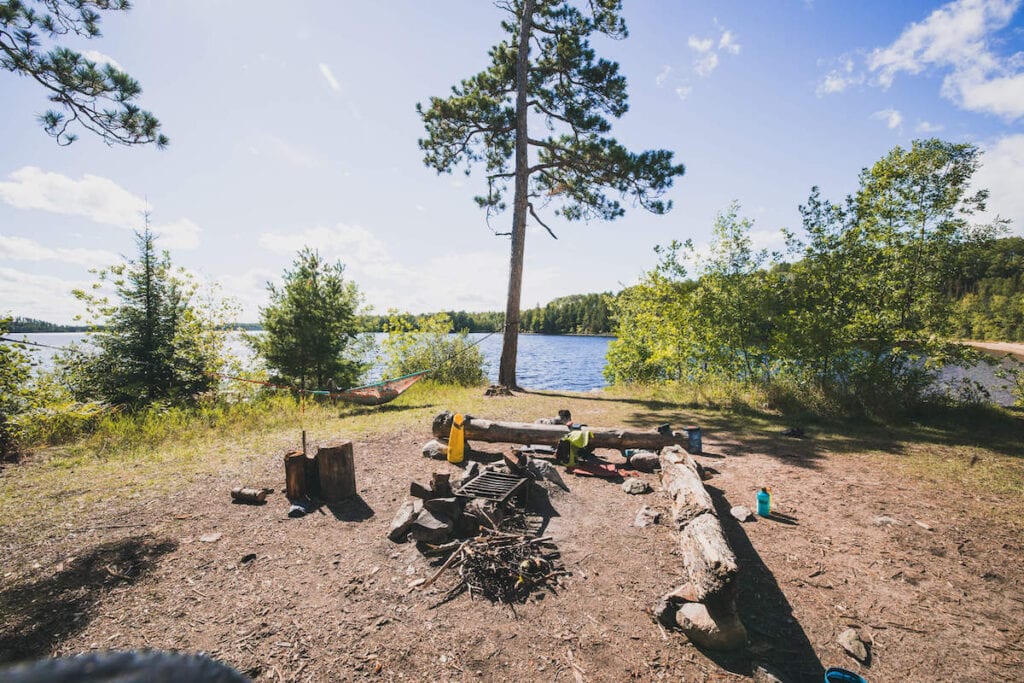
Boundary Waters Canoe Trip Gear
One of the best parts about canoe camping is that you only have to lug your gear on portages.
You can read our 3-day backpacking checklist to get a general idea of what you’ll need. It goes without saying that the Boundary Waters is a remote area; be sure to pack warm clothing and rain gear so you can stay safe in the event of storms, submerged and wet packs, or days or rainy weather.
Shoes for the BWCA
You’ll want good footwear for the Boundary Waters that can deal with water and rugged portages. I recommend water sandals whenever you’re in the canoe or getting in and out. Check our review of the Teva Universal Trail Sandal . These would be a great choice for a BWCA trip.
For portages, you’ll want hiking shoes or boots that have a closed-toe and closed-heel. These will keep your feet and ankles protected while carrying heavy packs and the canoe. Portages in the BWCA are filled with rocks, tree roots, and slippery mud so plan accordingly.
Dry Bags and Canoe Packs
While you can technically use a backpacking pack to carry your gear, using canoe packs from Duluth Pack, Frost River, or Granite Gear has its perks — it’s also what you’ll get from your outfitter if you rent a canoe. You can also invest in a few lightweight dry bags to keep your items dry and separated, like these Sea to Summit Lightweight Dry Sacks .
For a cheaper option, simply line your pack with a garbage bag and arrange your gear inside.
Navigating the Boundary Waters
You’ll need a compass, map, and map case (outfitters will provide these) for a Boundary Waters canoe trip. Fisher Maps , McKenzie , and Voyageur make the best BWCA maps or National Geographic also makes a detailed BWCA Map Pack . There’s little to no cell service in the BWCA, so don’t rely on your phone for navigation and pack or rent a satellite communication device for safety.
To navigate the Boundary Waters, your best bet is to orient yourself using portages, campgrounds, and prominent features of the shoreline like points, islands, bays, etc. It’s normal — and a right of passage — to get pretty confused about exactly where you are since the lakes and islands can make it seem like a maze. Don’t worry, it’s rare for visitors to actually get lost!
Water Gear & Equipment
Aluminum canoes are heavier to carry on portages, but they’ve got one big benefit: they’re bombproof. No need to worry about scraping a rock in these! Kevlar canoes are more fragile and require extra effort when using them, but they’re much lighter to use while paddling and portaging.
You’ll also need a fair amount of gear for your canoe (outfitters will provide all of this): paddles, life jackets , duct tape, sponge and bailer, and cords to tie in your packs. If you’re planning to fish, bring a pole and tackle box. And don’t forget a swimsuit!
Essential Clothing for Paddling
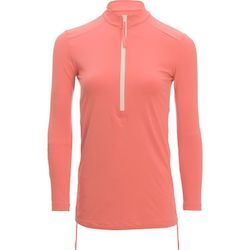
Carve Designs Cruz Rashguard
I prefer wearing a rashguard over sunscreen these days. I own the Cruz in 2 colors and it’s a staple for any water activity because it dries quickly but also keeps you cool, plus the cut is flattering.
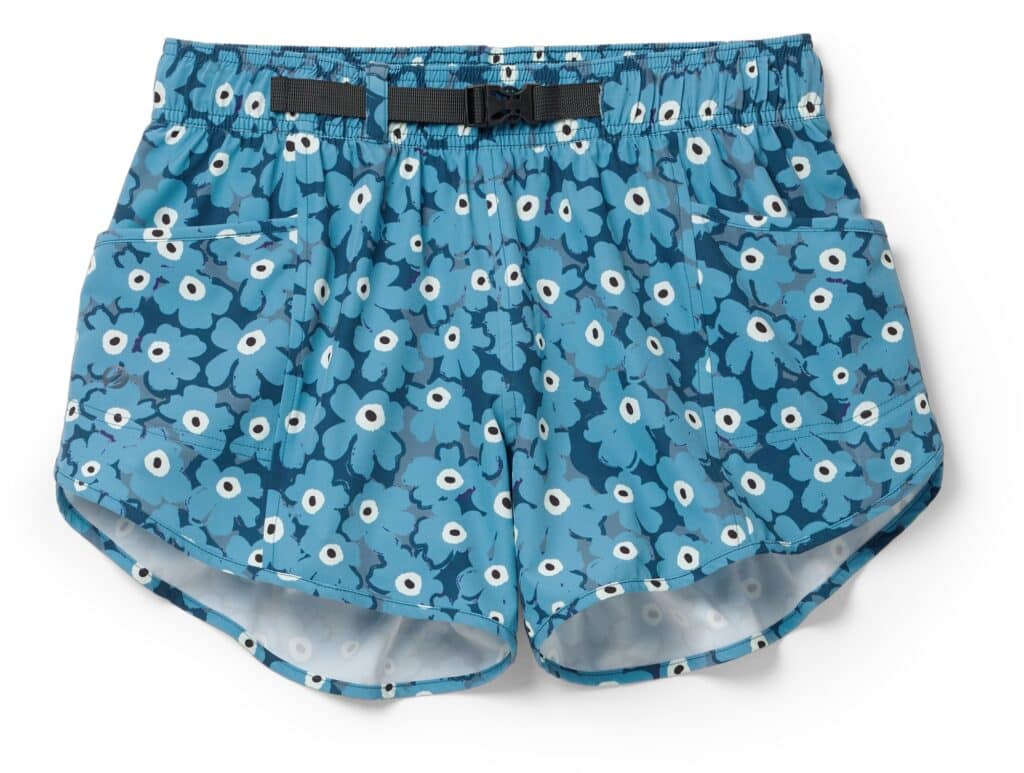
Nani Swimwear Hybrid Explorer Shorts
These shorts are super comfortable, dry really quickly, and come in a bunch of colors and prints. I wear them on all water adventures!

Teva Universal Trail Sandals
Sandals that stay on your feet and can get wet are essential. I like these because they have good grip and can be worn hiking as well, plus they can easily be strapped to your boat when not in use.

Outdoor Research Sunbriolet Hat
You’ll want a wide-brim hat that can get wet and has a chin strap so it stays on in the wind. This Outdoor Research hat is quick-drying, will float if it falls in the water, and comes in a variety of colors.
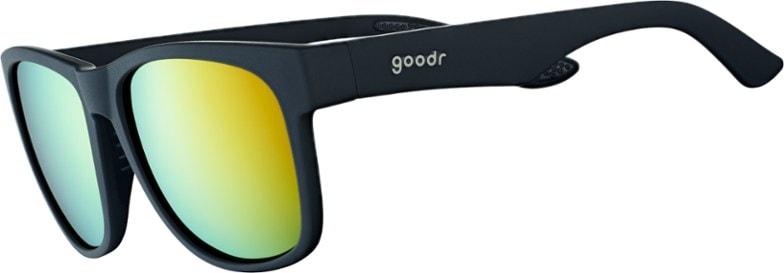
Goodr Polarized Sunglasses
Polarized glasses are best for the reflection of the water. I like to wear budget-friendly sunglasses paddling and I always wear a retainer so I don’t lose them in the water.
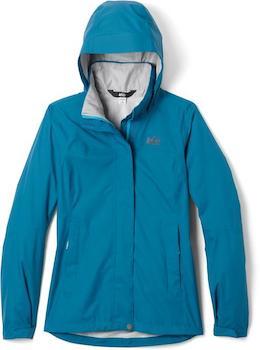
REI Co-op Rainier Rain Jacket
If it’s chilly or windy it can be helpful to have a lightweight rain jacket or windbreaker out on the water with you. I usually pack a jacket like this just in case!
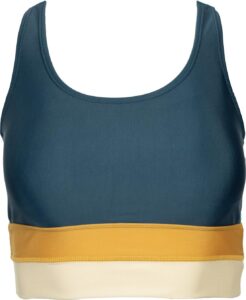
Supportive Swimsuit or Sports Bra
You’ll want a comfortable swimsuit that you can be active in. I like to avoid swimsuits that pull on my neck (like halters) and have been loving Nani Swimwear lately.
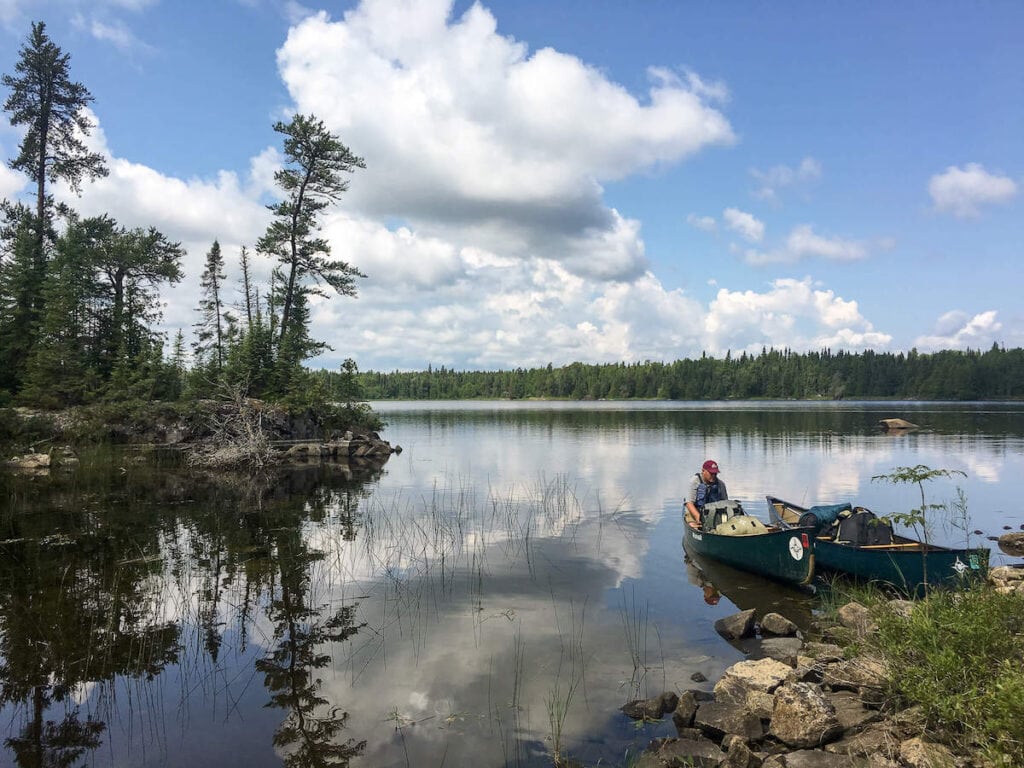
There are bears that live in the BWCA, but they rarely bother people. Most visitors opt to hang their food from a tree instead of bringing a bear canister. To hang your food bag, find a tree limb about 15-20 feet off the ground. Attach a heavy item to the end of your rope and throw it over the branch so that the rope is 4 feet away from the trunk. Now attach your bear sack to the rope, pulley your bag into the air, and tie off your rope. With a little searching, you can usually find a popular tree limb that’s used near each campground.
Water Filtration
Luckily, obtaining water in the Boundary Waters is much easier than most backpacking trips. While old-timers may still drink straight from the lake, it’s safer if you boil or filter the water. Simply paddle out away from your campsite and fill your containers from the lake, then purify or boil the water before using. While I used to drink straight from the lake, it’s not worth risking a Giardia infection.
The Platypus GravityWorks filter system is simple to use without needing to pump it. I’ve also used a Katadyn Hiker Microfilter in the BWCA, too, which I like because you can filter water straight into your water bottle while you’re canoeing.
I recommend filling and treating a 1- to 3-gallon water container when you arrive at your campsite to use for dinner, breakfast, and filling smaller 1-liter Nalgenes for the next day’s paddle.
Fire, Camp Stoves, and Cooking Gear
BWCA campgrounds have a fire pit area that can be used for cooking as long as there isn’t a fire ban in the area. The fires must be small and be put out completely when you’re not in camp. Firewood is available from the surrounding forest, but remember to only take dead and downed wood — live wood doesn’t burn well, anyway. If there is a fire ban, bring a camp stove for your cooking.
Sun Protection
It’s easy to get sunburned on a Boundary Waters canoe trip. Not only are you spending a lot of time out under the sun, but it’s also reflecting upward from your canoe and the water, too! Use sunscreen , a sun hat , and consider UPF clothing to keep the sun at bay.
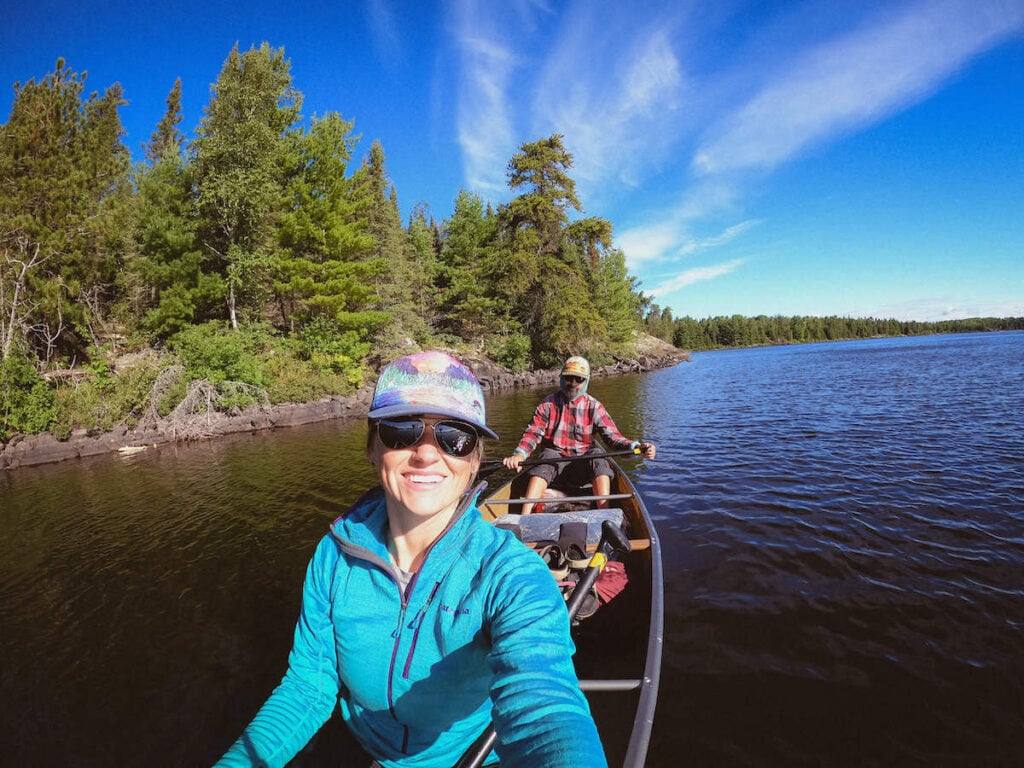
Help Protect the Boundary Waters
The BWCA is a unique, special place. But that doesn’t mean it always will be. Consider supporting the Friends of the Boundary Waters Wilderness to ensure this national treasure stays protected. Proposed copper-sulfide mines like Twin Metals risk contaminating and permanently polluting the Boundary Waters.
Learn more about threats to the BWCA and how you can help protect it by supporting Friends of the Boundary Waters Wilderness .
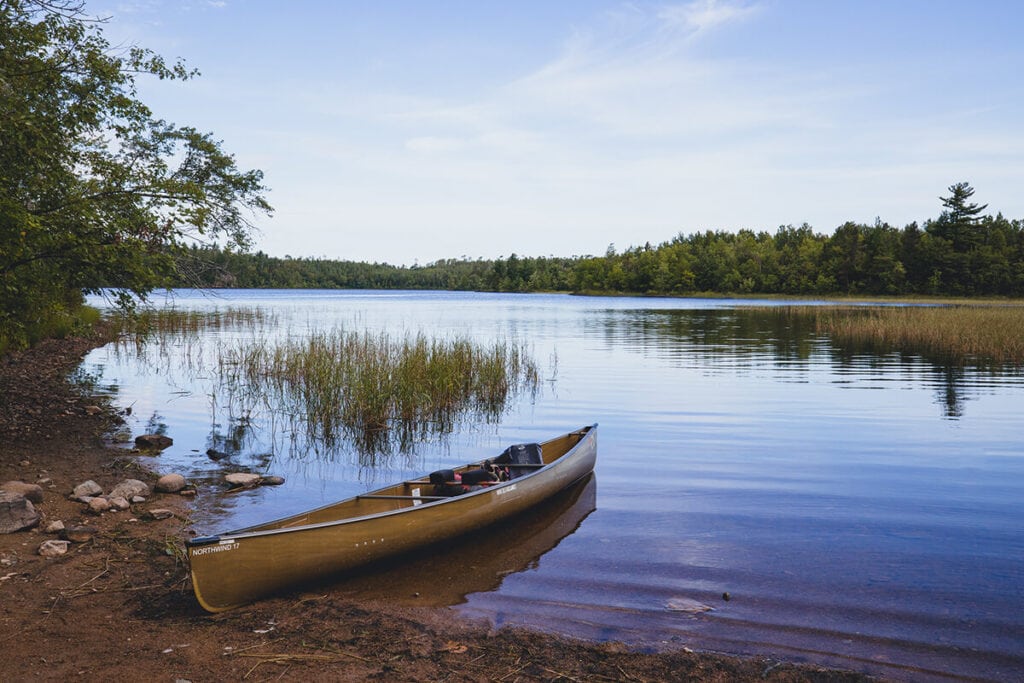
Taking a canoe trip through Minnesota’s Boundary Waters is a trip unlike any other, and thanks to its massive size and undeveloped character, it’s a wilderness you can return to again and again for new adventures. Whether you’re a seasoned paddler or new to canoe camping, the BWCA will not disappoint!
Have you done a Boundary Waters canoe trip or are you planning one? What questions do you still have? Let us know in the comments!
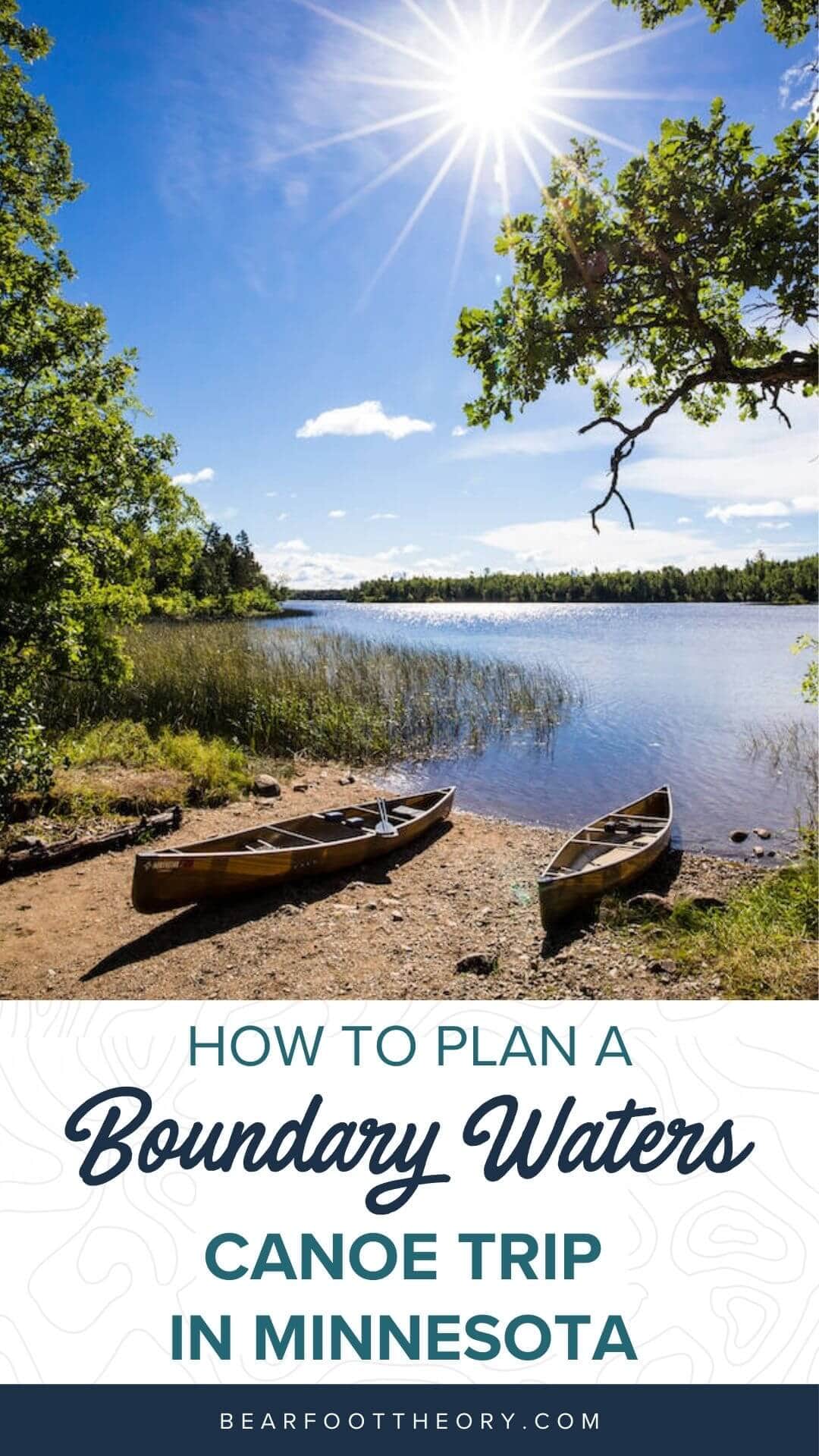
Isak is an outdoor freelance writer that loves traveling through Western public lands in his self-converted van to hike, ski, and find the country’s best used bookstores and coffee shops. When he’s not writing or adventuring, Isak is working on Seek More Wilderness to provide outdoor goods that give back to the outdoors. You can view his writing clips at IsakKvam.com and follow his van adventures on Instagram.
Leave a Reply Cancel reply
Your email address will not be published. Required fields are marked *
Save my name, email, and website in this browser for the next time I comment.
I just got back from the Boundary Waters (6 days, 5 nights in early-mid Sept) and it was amazing. I’m definitely making a trip back sometime, even though I had moments of questioning if i signed up for type 2 fun…. 1) drizzle to rain to soaked tent on night #2, 2) deluge welcomed us to a steep, rocky, slippery campsite, 3) trying to carry a canoe (even part way) on a mile long, level 8.5 portage (and then to find out that was only the second portage of a 3x portage day)…. but then we rewarded with the most beautiful rainbows, silence, starry nights, and disconnection from civilization. Great write up!
That sounds like an adventure!
Amazing clicks of pictures! we have done with same place and its look like a heaven on the earth and we enjoyed our trip. Before visiting this place, we consult with Boundary Waters Catalog about the place and we bought some tools from them. We got some information from some blogs and our trip was amazing.
Hi Eric, thanks for reading & the tip for the Boundary Waters Catalog. Glad you had an awesome trip!
The Boundary Waters: The Complete Guide
:max_bytes(150000):strip_icc():format(webp)/Becker1-5b734a56c9e77c0025caddbd.jpg)
BlueBarronPhoto/Getty
Located along the U.S.-Canadian border between Minnesota and Ontario, the Boundary Waters have been a popular destination for explorers, adventurers, and active travelers for decades. Spread out over more than a million acres of wilderness, this region is made up of dense forests, sprawling lakes, and a spiderweb of interconnecting rivers and streams. For anyone looking to get away from it all, this is a place where you can leave the trappings of civilization behind and immerse yourself in nature that has remained largely untouched by man for centuries.
History of the Boundary Waters
Carved by glaciers more than 10,000 years ago, the Boundary Waters are made up of striking landscapes that feature rolling hills, broad valleys, and seemingly endless forests. Its countless waterways form a natural border between the U.S. and Canada, flowing eastward towards Lake Superior. These waterways were often used by early explorers and fur traders who helped open North America during the 17th and 18th century.
When referring to the Boundary Waters, most people associate it with the Boundary Waters Canoe Area Wilderness , a large protected area that was established in 1964 as part of the US. National Park system . In reality, the broader Boundary Waters region is made up of several subsections which also include Superior National Forest, Voyageurs National Park and Grand Portage National Monument on the American side of the border, and Quetico and La Verendrye provincial parks in Canada. Collectively, each of these areas makes up the Boundary Waters, creating a massive outdoor playground for those adventurous enough to experience it all.
How to Get There
Located in the far north of Minnesota, just reaching the Boundary Waters can be a bit of an adventure. Those traveling by plane will likely fly into Minneapolis or possibly Duluth, but even then a long car ride is required to reach this beautiful wilderness. You'll need to budget five to six hours of drive time from Minneapolis or two to three hours from Duluth. That drive is a scenic one however, quickly leaving urban settings behind in favor of the dense Northwoods. Sharp eyed travelers may even be able to spot deer, moose, or even black bear along the way.
For the absolute best driving experience, make your way along the 57-mile Gunflint Trail, a national scenic byway that begins in the town of Grand Marais and ends at the Trail's End Campground, a good launching point for a Boundary Waters adventure. The drive, which approaches the Boundary Waters from the east, is remote and beautiful from start to finish. That said, there aren't many places to stop or resupply along the way. Be sure to have full gas tank and plenty of road trip snacks before setting out.
Those coming from the west can start their Boundary Water experience in Ely, Cook, or Crane Lake. These quaint little upper-midwest towns are friendly, accommodating, and a great place to purchase last minute supplies before leaving civilization behind for awhile.
What to Expect
As already noted, the Boundary Waters are a remote and wild destination. Visitors can expect miles of dense forest on their drive to the border area, where they'll discover dozens of interconnected rivers and more than 1,175 lakes of varying sizes. Wildlife is in abundance, throughout the region too, including more than 200 species of birds to go along with the deer, moose, wolves, lynx, black bear, and more than 40 other types of animals. Visitors are advised to take caution when encountering those creatures. Although they are seldom aggressive, they can be dangerous when surprised or cornered.
Travelers shouldn't expect much in the way of amenities while in the Boundary Waters, including cell phone service. The wilderness area is located miles from any urban environment, which means don't expect to be sending text messages, making phone calls, or sharing photos on social media. In fact, once you enter the protected area, there are almost no manmade structures to be found, leaving the region almost completely untouched by humans. So much so that even aircraft are prohibited from flying below 4,000 feet while over the Boundary Waters, something that no other wilderness area in the U.S. can claim.
One of the best things about spending time in the Boundary Waters is just how peaceful and quiet it can be. Because it is located in such a remote place, visitors typically only hear the sound of the wind, the water, and the call of wild animals. At night, it is a dark zone, far from any city lights. That makes it a great spot to go stargazing, free from light or air pollution.
Things to See and Do in the Boundary Waters
The Boundary Waters are a dream destination for outdoor enthusiasts. With more than 1,200 miles of canoe routes to paddle, 12 long-distance hiking trails to walk, and 2,000 designated campsites to pitch a tent, visitors can spend a lifetime wandering this wilderness and still only see a fraction of what it has to offer.
When visiting the Boundary Waters, travelers will have to make two choices—how long they want to stay and how they want to explore the area. Most come for just a few days, camping, hiking, and canoeing on the edges of the wilderness. Some will venture further into the interior of the region, something that can only be accomplished by canoe or kayak. A few will even paddle the Boundary Waters from end to end, spending upwards of two weeks in the backcountry along the way.
Part of the fun of visiting the Boundary Waters is setting your own itinerary and exploring the areas that most call to you. But if you have a limited time or are looking for some direction, try canoeing on Sea Gull Lake, an easily-accessible body of water that is generally calm, beautiful, and fun. On sunny days, its waters turn to a stunning shade of blue as well, providing an extra level of tranquility.
Hikers will find numerous trails to wander, both short and long. For instance, Big Moose Lake Trail is 2.5 miles out and back, and is great for stretching your legs in some wonderful scenery. Meanwhile, Eagle Mountain Trail is 3.5 miles in length and climbs to the highest point in the state of Minnesota. Backpackers looking for a significant challenge should put the Kekekabic Trail on their bucket list, as it is 38 miles of pure backcountry bliss.
Camping is a popular activity in the Boundary Waters of course, with literally hundreds of campsites available. The vast majority of those campsites are primitive in nature, without running water or other facilities. Many are located in remote areas only accessible by canoe, so be prepared to fully self sufficient while in the wild.
Unsurprisingly, anglers will find plenty of great fishing spots in the Boundary Waters too. The waters that make up the region are teeming with smallmouth bass, northern pike, and walleye. If you fancy yourself a fisherman or woman, pack your pole and tackle box. You'll be hard-pressed to find better opportunities to land a big one anywhere else in the continental United States.
Where to Stay
As mentioned, there are more than 2,000 designated campsites located throughout the Boundary Waters, allowing visitors to pitch their tent in the vary heart of the wilderness. Camping is of course the best way to experience this amazing destination, so bring a good tent, comfortable sleeping bag, and all of the gear you'll need for your stay. If you do plan on camping, keep in mind that you'll need a permit for backcountry travel at all times of the year. You'll also need a reservation for campsites during the busiest time of the year, which falls between May 1 and Sept. 30. Those permits can be obtained at recreation.gov .
Those who prefer not to camp while visiting the Boundary Waters have a few options to choose from. Hotels and lodges can be found in Grand Marais, Ely, Cook, and Crane Lake. You'll want to book your stay well in advance of course, and staying in one of those towns means you'll be commuting back and fourth throughout your visit.
You'll also find some rustic lodges located throughout the region. Places like the Gunflint Lodge , the Bearskin Lodge, and the Clearwater Historic Lodge are more conveniently placed and offer good access to the wilderness. In addition to accommodations, they can also organize outings or provide gear and supplies for day trips too.
When to Visit
The peak travel season in the Boundary Waters is in June, July, and August. The weather is fantastic, with warm days and cool nights, making it a perfect time to camp out in a tent. Of course, this is also the busiest time of year, which means more traffic on the roads, busier campsites, and crowds on some of the more popular trails.
If solitude is what you seek, then wander deeper into the Boundary Waters to escape the influx of visitors or visit during the shoulder season taking place in May and September. The upside of visiting during this time of the year is that the seasonal stores, shops, and lodges are all open for business. During the colder months, many of those outlets shut down or operate on a reduced schedule. That means that while you'll be avoiding the busy tourist period, you may have to plan further ahead in order to have all of the supplies and gear that you'll need for your journey.
Autumn comes early in northern Minnesota, but it is utterly spectacular in the Boundary Waters. The leaves change to an array of brilliant colors, making it a great time to be in the wilderness. It is often less crowded during this time of year, though a steady flow of leaf peepers can line the roadways. Once again, getting into the backcountry will help avoid the traffic and provide for a wonderful adventure at the same time.
Winter can be long and harsh in the Boundary Waters, but if you enjoy cold weather outings there is much to like in this part of the country. Cross country skiing and dogsledding can take you deep into the backcountry, where you'll discover a wilderness that is empty and quiet. Only experienced adventurers should consider making such a trek, but those that do will be rewarded with endless miles of trails and frozen waterways all to themselves.
The 8 Most Adventurous Things to Do in Tahoe
The Best Places to Go Camping in Olympic National Park
Camping in Whitefish, Montana and Glacier National Park
Mohican State Park: The Complete Guide
Voyageurs National Park: The Complete Guide
The Best US National Park for Every Outdoor Activity
The 9 Best Hiking Trails in Nashville
Yosemite National Park: The Complete Guide
Bryce Canyon National Park: The Complete Guide
Hanging Rock State Park: The Complete Guide
Banff National Park: The Complete Guide
The Most Dog-Friendly National Parks in the U.S.
The Complete Guide to Oklahoma's Beavers Bend State Park
10 Reasons to Visit Yellowstone in the Winter
Smith Rock State Park: The Complete Guide
Rainbow Springs State Park: The Complete Guide


How to Plan An Amazing Boundary Waters Trip in 6 Easy Steps

Last Updated: 4/12/23
The Ultimate Boundary Waters Trip Planning Guide
Boundary Waters trip planning doesn’t have to be daunting.
If you’re wondering how to plan your first-ever visit to the Boundary Waters Canoe Area Wilderness in northeastern Minnesota , I’m here to help. As a Boundary Waters outfitter on the Gunflint Trail , I’ve been helping people create unforgettable Boundary Waters trips for nearly two decades.
If you’re planning a Boundary Waters canoe trip but don’t know how to begin, read on. In this guide, I’ll do a deep dive into all your Boundary Waters trip planning questions. This guide breaks down Boundary Waters trip planning into five easy steps.
My insider advice will help you create a great first BWCA canoe trip. Just don’t be surprised if you end up falling in love; this region of the United States has captivated outdoor adventurers for centuries.
This post contains affiliate links. When you purchase something through these links, I receive a small commission that helps me create this blog’s content. There’s no extra cost to you.
Gotta run? Pin for future reference for Boundary Waters trip planning!

Ultimate Boundary Waters Trip Planning Guide Table of Contents
An Introduction to the Boundary Waters
- What Is the Boundary Waters Canoe Area Wilderness?
- Where Is The Boundary Waters Canoe Area Wilderness
- How the Boundary Waters Differs From A National Park
- When’s The Best Time to Go on a Boundary Waters trip?
- How the Boundary Waters Canoe Area Wilderness Permit System Works
- Why Should You Go on a Boundary Waters trip?
- Is A Boundary Waters Trip Right For You?
6 Steps of Boundary Waters Trip Planning
1) Select a date for your trip 2) Research your BWCAW entry point and plan your trip route 3) Book your permit 4) Organize your camping gear 5) Plan your camping menu 6) Mentally prepare for your Boundary Waters Trip
Helpful Boundary Waters Trip Planning Information
Best boundary waters trip planning resources, boundary waters trip planning mistakes to avoid.
- My Best Boundary Waters Trip Tips
An Introduction to the Boundary Waters Canoe Area Wilderness
What is the boundary waters.
The Boundary Waters Canoe Area Wilderness is a million-acre tract of public land stretching along northeastern Minnesota’s Canadian border. Nearly 1200 lakes populate the Boundary Waters. Portage trails connect these lakes into navigable canoe camping routes.
To move around the Boundary Waters, you load all your gear into a canoe, paddle across a lake or down a creek to a portage. At the portage, you pick up all your gear and canoe and carry it to the next lake. Rinse and repeat until you find a campsite (all equipped with a fire grate and latrine) that suits your group for the night.
You’ll often see people referring to the Boundary Waters as the BWCA, although the correct abbreviation is BWCAW. That “W,” signifying “wilderness,” is an important piece of the Boundary Waters’ identity.
Internationally acclaimed for its natural beauty, the Boundary Waters attracts anglers, canoeists, and those seeking a peaceful wilderness camping retreat. This tract of lakes and forest is a Minnesota must-see, but it’s not without unique challenges for even experienced outdoor adventure travelers.
Where is the Boundary Waters Canoe Area Wilderness?
The Boundary Waters Canoe Area Wilderness is located inside the Superior National Forest .
The Boundary Waters has three separate units:
- 1) The Vento Unit accessed from the east side of the Gunflint Trail and the end of the Arrowhead Trail in Hovland
- 2) The largest “main” section of the Boundary Waters that stretches from Gunflint Lake all the way to Ely and Crane Lake
- 3) The La Croix unit in between Burntside and Vermillion Lakes
In general, people access the Boundary Waters either from the east side via Lake Superior’s North Shore and Grand Marais or the west side via Ely and Echo Trail.
Drivetimes to Boundary Waters west side (Ely/Echo Trail)
Duluth to Boundary Waters west side: 2 hours Twin Cities to Boundary Waters west side: 4 hours Chicago to Boundary Waters west side: 9 hours
Drivetimes to Boundary Waters east side (Grand Marais/Gunflint Trail)
Duluth to Boundary Waters east side: 3 hours Twin Cities to Boundary Waters east side: 5 hours Chicago to Boundary Waters east side: 11 hours

The Boundary Waters are NOT a national park
Managed by the U.S. Forest Service , I think many people expect the Boundary Waters to be a slightly wilder national park. But this is no White Sands ; it’s a wilderness!
While the Forest Service maintains portages and campsites to keep them useable, they also let nature run its course. If a beaver dam floods a portage, you might get wet feet (and shins). Expect narrow, rock strewn portage trails sometimes impeded by down trees or thick brush. And yes, if a wildfire ignites somewhere in the BWCAW, you might have to adjust your route.
Beyond the iconic “Boundary Waters Canoe Area Wilderness” signs at the border to the wilderness area, there are no signs in the BWCAW. Boundary Waters visitors depend on their own navigation skills. With no cell service or a speedy way for first responders to reach distressed campers, BWCAW visitors should expect to get themselves out of any emergencies.

When’s The Best Time To Go on A Boundary Waters Trip?
While the Boundary Waters are open year-round, canoe trip season runs from when lakes start opening up in early to mid-May through mid October. Overnight camping permits are required from May 1 – September 30.
If you want to fish lake trout, go immediately after ice out or as late in September as possible. To avoid crowds, skip Boundary Waters high season in late July through late August. Wild berry season, the best summer weather, and ideal swimming temperature correlate with BWCAW high season.
Other considerations for when to take your Boundary Waters canoe trip: bugs like mosquitoes and black flies peak in June. Fall in the Boundary Waters is beautiful. Many people like the quietness of September trips, but days are short and temperatures can be chilly.
Like all things Boundary Waters related, you can have a fantastic trip no matter when you visit, but a little research ahead of time will let you know what to expect.

How The Boundary Waters Canoe Area Wilderness Permit System Works
To regulate usage, the U.S. Forest Service requires a permit for anyone camping overnight in the Boundary Waters between May 1 – September 30. (If you’re doing a Boundary Waters day trip , you still need a permit but they are free and self-issued.)
During the summer season, the Forest Service sets a number ( quota ) of how many overnight groups can enter the wilderness through each specific entry point each day. This helps eliminate overcrowding in especially popular Boundary Waters locations. It should also ensure that your group finds an open campsite within a normal day’s travel.
This quota system is critical to maintaining a wilderness feeling in Boundary Waters, but it’s also a little confusing.
Important Points About Boundary Waters Permits
- You only need one permit for your entire group (limited to nine people and four watercraft) for your entire trip.
- Your permit allows you to enter the BWCAW at a specific entry point on a specific day . As long as you enter the Boundary Waters on that day at that point, you can stay in the Boundary Waters as long as you want. (Technically you need to switch campsites every 14 days, but yes, some people have stayed for an entire year!)
- It’s worth reiterating that while a permit should mean there’s an open campsite group fairly close to the entry point, it in no way guarantees a campsite on the first lake you reach.
Why You Should Definitely Go on a Boundary Waters Trip
Many people come to experience great fishing for walleye, bass, pike, trout. Other Boundary Waters visitors want to see wildlife in their natural habitat. For most, disconnecting from technology and stripping life down to the bare essentials is the real draw. In 2023, the wilderness area was awarded “Quiet Park” status by Quiet Parks International.
In late July and early August, the Boundary Waters offer unparalleled wild berry picking and swimming. No matter why you choose to visit the Boundary Waters, you’ll be treated to unreal stargazing as well as beautiful sunrises and sunsets. In fact, in 2020, the International Dark Sky Association designated the Boundary Waters as the world’s largest dark sky sanctuary.
But beyond the region’s scenic, solitary appeal, Boundary Waters trips are often very personally rewarding. There’s no denying that BWCA canoe trips can be challenging . Many people walk away with increased self-confidence and the rewarding sense of “hey, I didn’t know I could do that!” Additionally, Boundary Waters trips can lead to meaningful connections with family and friends and memories you’ll never forget.
If you’re ready to get planning a BWCA adventure of your own, here are my 6 easy steps to plan an amazing Boundary Waters trip.
Is A Boundary Waters Trip Is Right For You?
But first, before committing to a BWCA canoe trip, carefully consider your answers to these five questions:
- Do you like being outdoors?
- Are you comfortable on self-guided adventure and do you trust yourself or someone else in your group with navigation?
- Do you like the idea of going off the grid?
- Do you have stamina and can you tolerate moderate physical discomfort?
- Are you okay with things not going to plan?
If you answered in the affirmative, a Boundary Waters trip might be right up your alley. Let’s get planning!

6 Easy Steps To Plan Your Next Boundary Waters Trip
1) select a date for your boundary waters canoe trip.
The date you start your Boundary Waters will have a profound impact on the nature of your canoe trip.
Since there’s nothing negotiable about the BWCAW overnight camping permit system. If you have a specific Boundary Waters route you want to do, you might need to be flexible with your starting date to accommodate permit availability. If you must start your trip on a specific date, you might not get your first choice of entry point. Should your schedule change and you need to start your trip on a different day, you must cancel your first permit and book a new permit for your new start date.
Remember, you aren’t booking a period of time in the Boundary Waters, you’re booking the right to enter the Boundary Waters at a certain point on a certain day. There is no such thing as entering the Boundary Waters a day earlier or later than what’s printed on your permit. If you don’t enter the Boundary Waters at the date and point on your permit, your permit is null and void.
Before you spend too much time gnashing your teeth over which Boundary Waters route you want to do, check the available Boundary Waters overnight paddle permits on recreation.gov to see which entry points and subsequent routes are available for your starting date.

2) Research Your BWCAW Route
Set aside a couple evenings to research the Boundary Waters before selecting your route.
(If you’re planning your Boundary Waters trip before permits become available in late January, you can do steps 1 and 2 simultaneously.)
With dozens of BWCA entry points to choose from it’s easy to feel overwhelmed. I highly recommend Robert Beymer’s Boundary Water Canoe Area guidebooks for a user-friendly introduction to the Boundary Waters. He discusses each entry point in detail and provides route suggestions for each entry point. It’s a great one-stop shopping resource to guide you to a route that’s the right length and difficulty for your group.
You can also find this information poking through bwca.com’s trip report archives or on the Boundary Waters reddit.
If you don’t like research (um, I’m not sure we can be friends . . .) your best bet for finding a route is to pick up the horn and call a Boundary Waters outfitters . These businesses on the edge of the BWCAW cater to the needs of Boundary Waters visitors with canoe and gear rental, shower facilities, bunkhouse accommodations, and yes, trip advice. Most outfitters’ websites list several canoe route suggestions and they’re happy to talk you through those routes. Often 15 minutes on the phone with an outfitter can save you two weeks of increasingly confusing (and conflicting) internet research.
How do you select a BWCA canoe route?
You need to answer one major question when selecting a Boundary Waters canoe route: what do you want to do on your trip ?
Specifically . . .
- Do you want to base camp a couple lakes in from your entry point?
- Is fishing important?
- Do you want to avoid portaging at all costs?
- How do you feel about big water (aka, large lakes)?
- Do you want to move every day?
The answers to these questions naturally narrow down route possibilities for your group. It’s important to prioritize because it’s rare, if not basically impossible, for a Boundary Waters route to perfectly align with all of your trip desires.
If you don’t want to portage, you’ll spend your Boundary Waters trip on a large, busy lake. If you don’t want to see many people, you’ll need to put a few difficult portages between you and the entry point. Beautiful scenery might come at the expense of great fishing. It’s all a give and take, so take the time to determine your Boundary Waters route dealbreakers before committing to an entry point.

3) Reserve Your Boundary Waters Permit
Permits for the upcoming season become reservable on the last Wednesday of January. That’s the first day you can reserve permits, but as long as there’s permit availability, you could buy a permit the very day you want to start your trip.
In recent years, the Boundary Waters have seen a surge in popularity. If you want a popular entry point during high season (late July – mid August) book your permit as soon as you can.
To book a permit, pop over to Recreation.gov . If you don’t have one already, you’ll need to set up an account. If you’re using a Boundary Waters outfitters for your trip, they can reserve the permit for you, but they will still need to set up a recreation.gov account specifically for you using your email address.
Avoid these Boundary Waters permit booking mistakes
If your group size is larger than one, be sure to list at least one alternate leader other than yourself. In the event that you’re unable to go on the trip, this allows the permit to be transferred to that alternate leader without having to cancel and book a new permit.
The exit date you put on your permit isn’t written in stone and has nothing to do with your permit validity. The Forest Service mostly wants this info for statistical reasons. Remember, you’re not reserving a “____” night trip in the Boundary Waters – you’re booking an entry permit.
You can adjust the amount of people on your permit up until the moment your permit is actually issued to you at a U.S. Forest Service office or a Boundary Waters cooperator station, like an outfitters.

4) Organize Your Camping Gear
If you backpack or car camp, you’re probably well on your way with owning the gear you need for a Boundary Waters canoe trip. Consult my Ultimate Boundary Waters Packing List if you’re not sure! A couple months out from your trip, use my packing list to determine any items you need to rent or borrow.
You won’t get very far on your canoe trip without a canoe . Really a canoe, some paddles, and lifejackets are the only specialized pieces of equipment you need for a Boundary Waters trip. Happily, more often than not, there’s a Boundary Waters outfitters no farther than ten miles from your entry point that can rent you a canoe for $35-60 a day depending on the type and model you select.
Portage packs vs. backpacks and why you need to use them for Boundary Waters trips
Another commonly rented piece of Boundary Waters specific equipment are portage packs. Often referred to as Duluth packs, these large bags hold all your equipment, personal items, and food as you travel over portages. They also fit well in canoes.
If you already own backpacking packs, those will work, although they won’t hold as much gear and depending on their size can’t always lie flat on the canoe bottom. If you want to purchase some portage packs before your trip, Cooke Custom Sewing makes our favorites. And remember, whatever style pack you use, you will need a heavy duty plastic liner (like a construction trash bag) for the pack to keep your gear dry.
When should I reserve gear for a Boundary Waters trips?
If you need a canoe, reserve one with an outfitter at least six weeks before your trip’s start date. For complete outfitting (where the outfitter provides everything -canoe, gear, food – except personal items like clothing and toiletries), reserve at least two months out.
Just need a tent or portage pack? A couple days’ heads up is usually plenty of notice.

5) Plan Your Camping Menu
Meal planning for a Boundary Waters canoe trip is a big task and really warrants its own post at a later date. (Stay tuned!)
To avoid packing way too much food, try delegating one person in your group to tackle this task. If you have anyone in your group with dietary restrictions, nominate them! For best results, start thinking about your Boundary Waters trip menu about a month out so you can order any specialized dehydrated food or have enough time to do your own dehydrating if that’s how you roll.
If you’ve gone on overnight backpacking trips, you’re probably already familiar with brands like Backpacker’s Pantry, Mountain House, or Good To-Go for lightweight, dehydrated entrees.
One beautiful thing about Boundary Waters trips is that you don’t have to solely depend on these pre-packaged meals. Because you only need to carry your food over portages, most Boundary Waters canoe trippers pack more fresh food (fruit, steaks for the first night dinner, breads like bagels) than you normally would on a backpacking trip.

6) Mentally prepare for your Boundary Waters trip
Attitude is EVERYTHING for a successful Boundary Waters canoe trip. I can’t overemphasize how important it is to go into a wilderness trip setting with an open mind and can-do attitude.
This might sound a little corny, but we see people struggle the most with their canoe trip when they fall into one of two camps. On one side we haven’t those who didn’t do any research about their trip and find it far more challenging than they expected. On the opposite end are those who researched their trip to the point that the trip can’t possibly live up to their expectations.
One technique for mentally preparing yourself for a great Boundary Waters trip is to have an answer to the question: “What will we do if it rains every day?” The people who have the most amazing Boundary Waters trip year after year are adaptable and go with the flow. No matter how diligently you research and prepare, things can still not go according to plan.
Boundary Waters Canoe Area: Western Region by Robert Beymer Boundary Waters Canoe Area: Eastern Region by Robert Beymer Message boards on bwca.com (especially trip reports ) Boundary Waters reddit Tumblehome: A Boundary Waters Podcast WTIP’s Boundary Waters Podcast Paddle Planner

Research fishing options before you pull your Boundary Waters permit
If you want to fish for a specific species of fish, please for the love of all things holy , make sure those fish actually live in the lakes on your route. Contrary to popular belief, walleyes aren’t native to northeastern Minnesota and many Boundary Waters lakes don’t have a single walleye in them. Save yourself a little heartache and plug lake names in the DNR’s Lake Finder before you book.
Don’t wait to book your permit A common scenario we see is that someone wants to book a Boundary Waters trip, but they’re not sure what dates will work for everyone interested in the trip. But with the Boundary Waters’ recent surge in popularity, we’re seeing many entry points’ permits fill up by late winter.
Your best bet is to just book a permit for the date that works for you personally. If you wait for everyone to agree, you might miss out on a permit all together. And here’s a little secret: if people really want to go on the trip, they’ll figure out a way to make it work.
Don’t hoard permits
If you’re dealing with indecisive group members, it’s temping to book several permits for different dates with the plan to just cancel the ones you end up not needing. The U.S. Forest Service is pretty hip to this trick. In fact, they reserve the right to cancel permits with overlapping dates. They will reach out if they suspect shenanigans.
And honestly, karma’s a witch, y’all. How would you feel if you couldn’t get a Boundary Waters permit because someone had booked seven permits but only ever planned to use one of them? Since it takes most people months to plan their canoe trip, canceling your Boundary Waters permit two weeks before the trip’s start date is not helpful.
Simply put: commit to one start date and let the chips fall where they will.
Don’t ignore the user education videos
After you reserve your permit, you will be sent links to Parts I and II of the Boundary Waters rules and regulations videos. These videos will answer all your questions about Boundary Waters rules and regulations, including group size limits, specific Boundary Waters regulations like the no glass bottles or metal cans rule, and much more.
Even if you’ve been to the Boundary Waters before, it’s well worth watching the videos for a rules and regulations refresher.
My Best Boundary Waters Tips
- Get as much gear as humanly possible into two or three packs (per canoe) to make portaging efficient and hands-free. Nothing crushes BWCAW visitors’ spirits faster than having to carry a hodgepodge of loose items (water bottles, tackle boxes, sleeping pads, cameras, camp chairs, etc.) over portages.
- Unless you’re doing a base camp where you’re not moving beyond the lake you start on, leave your kayak at home. Heavy, with limited gear capacities, kayaks don’t translate well to the portaging demands of a Boundary Waters trip. After all, there’s a reason it’s called the Boundary Waters Canoe Area Wilderness!
- Acknowledge that things could go wrong and have a plan for how to deal with an emergency. Take all necessary safety precautions but avoid idolizing safety to the point that you’re almost paralyzed with fear of a misstep.
- Prepare yourself for mental and physical challenges. Embrace the challenging parts.
- Take time to notice the sun setting or the smell of wild roses on the portage trail. Enjoy waking up with the sun and watching the morning mist rise off the lake.
- Don’t forget to have fun – you’re going to have an amazing time!
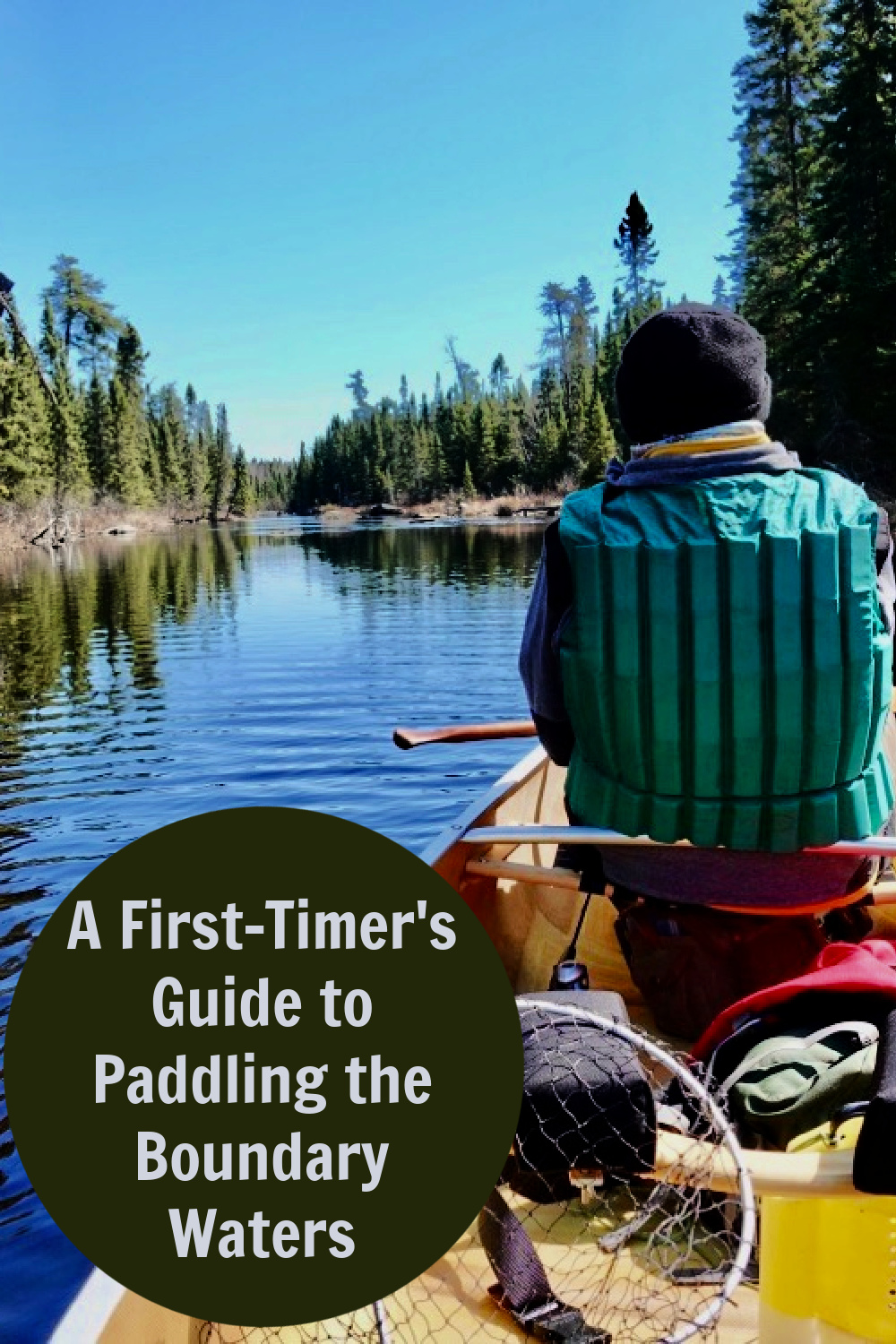
If you enjoyed this Boundary Waters trip planning guides, check out my other posts about the Boundary Waters region of northern Minnesota.

Hi! I’m Ada, a travel writer based in northern Minnesota, on a mission to see the world. I use this travel blog to provide practical, no-nonsense travel tips and itineraries for both domestic and international travels.
Home Airport:
European Christmas Markets
Where I’ve Been:
This is such a detailed post, thank you for sharing all your best tips! I’m from Wisconsin, so I’d love to get out and explore the Boundary Waters! 💙
I used to lead trips in the BWCA for Outward Bound so this post is very near and dear to me. You did an excellent job explaining everything in great detail. This post should be mandatory reading for everyone who wants to venture in the BWCA.
BWCA is such a magnificent place! I love the fact you address the mental preparation needed, a long trek there is no joke.

Ada is a travel writer based in northern Minnesota. She’s spent two decades as a freelance writer. She’s lived in three countries and has visited all 50 states. In addition to traveling the world, she runs a Boundary Waters outfitters and helps people plan canoe trips and other outdoor adventures in northeastern Minnesota.
Other Recent Articles
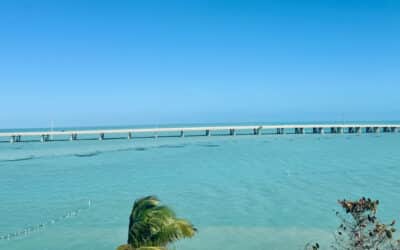
Best Stops On A Florida Keys Road Trip from Miami to Key West
Whether you’re driving from Miami to Key West or just day tripping on the Florida Keys Overseas Highway, you’ll want to include these 10 stops in your drive.

Key West Packing List For A December Visit
My Key West packing list has you covered with what to wear for a winter visit. My complete (& printable!) packing list makes packing for Key West, Florida a cinch.
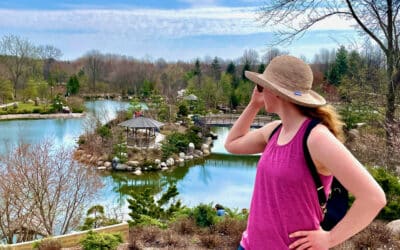
What To Do in Grand Rapids Michigan For A Stellar Weekend
Wondering what to do in Grand Rapids Michigan? This guide rounds up all the best things to do in Grand Rapids including restaurants, mansions, events, art, gardens, and more.
Thanks for signing up!
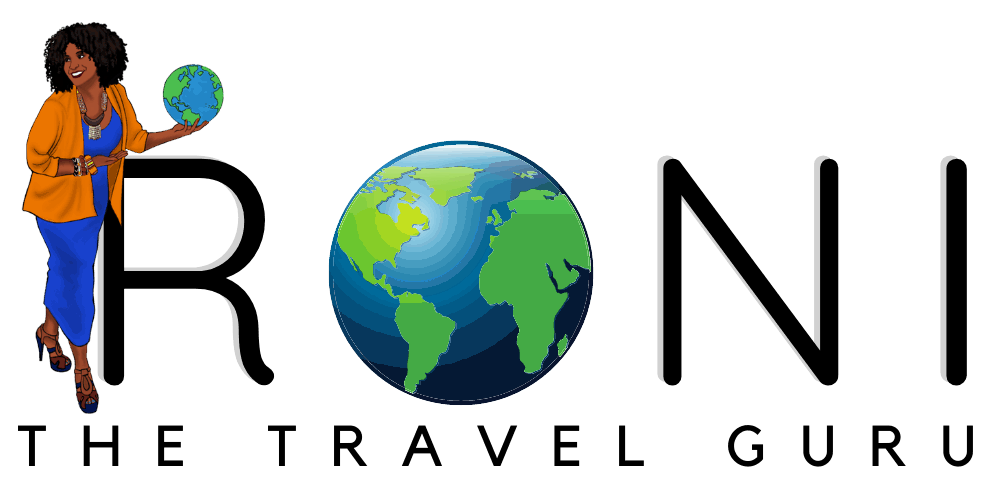
Moscow Metro – Part 2
Have you been to Moscow ? In all seriousness, they have the prettiest metro stations I have ever seen and I still can’t believe how immaculate and lovely every station was. There are several different stations pictured below and this is the second of several posts where I will show you the beauty of the Moscow Metro. Did you see part 1 ? There really isn’t much to say because I think the pictures speak for themselves. I have so many more pictures to share with you!
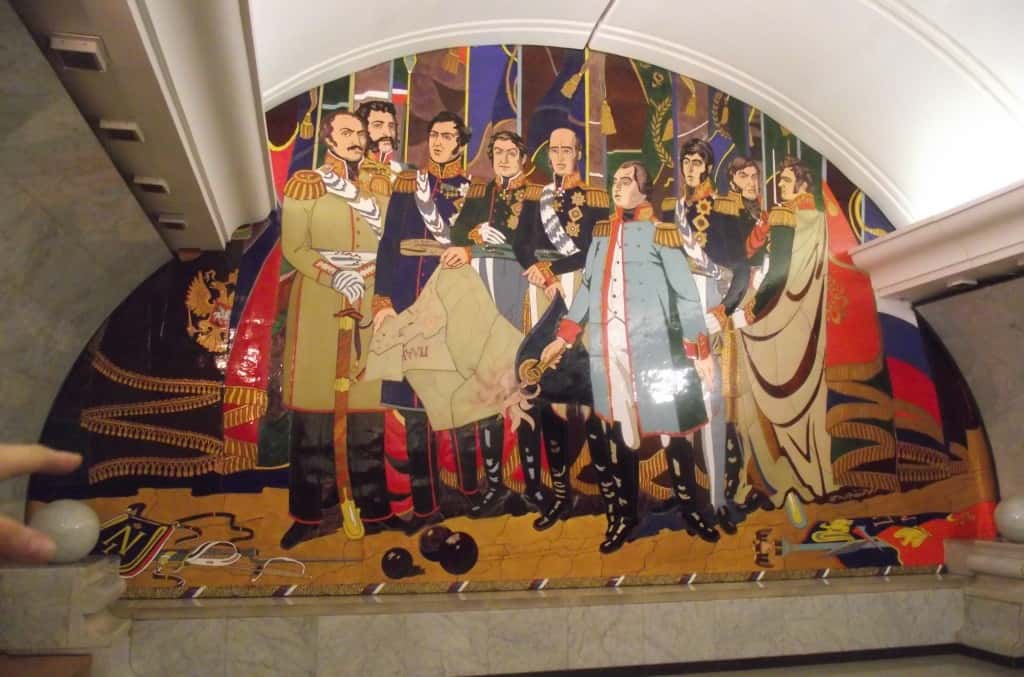
Have you ever been to Moscow? Is it someplace you have thought about visiting?
She speaks fluent English, French and Spanish, and works for a major airline. And guess what? She’s also a licensed elementary teacher and has an MBA.
Similar Posts
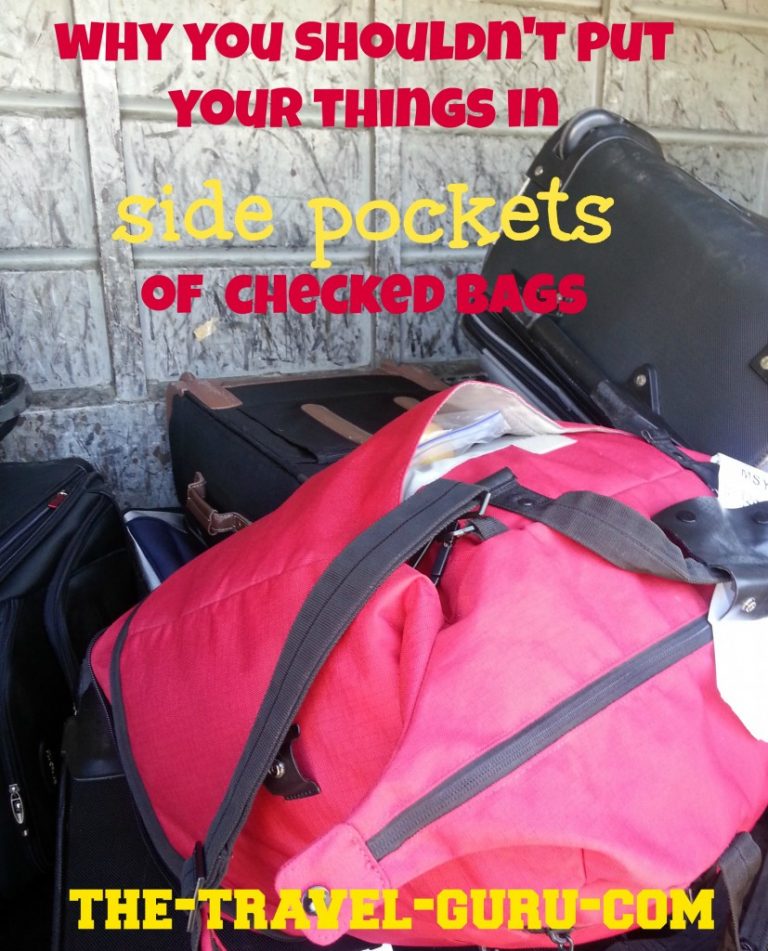
Why You Shouldn't Pack Things In The Side Pockets Of Your Checked Bags
Sometimes I look through my pictures and I think, “What in the world can I talk about today on…

How to Prevent Your Checked Bag From Being Lost
I almost NEVER check luggage, especially when I’m headed to a destination. One reason is that I know bag…

10 Best Travel Accessories For Long Flights
What travel accessories for long flights are your must-haves? I think red eye flights are simply the best. THE…

How I Became The Travel Guru
I haven’t always been fearless when it comes to travel. A friend of mine told me that readers…
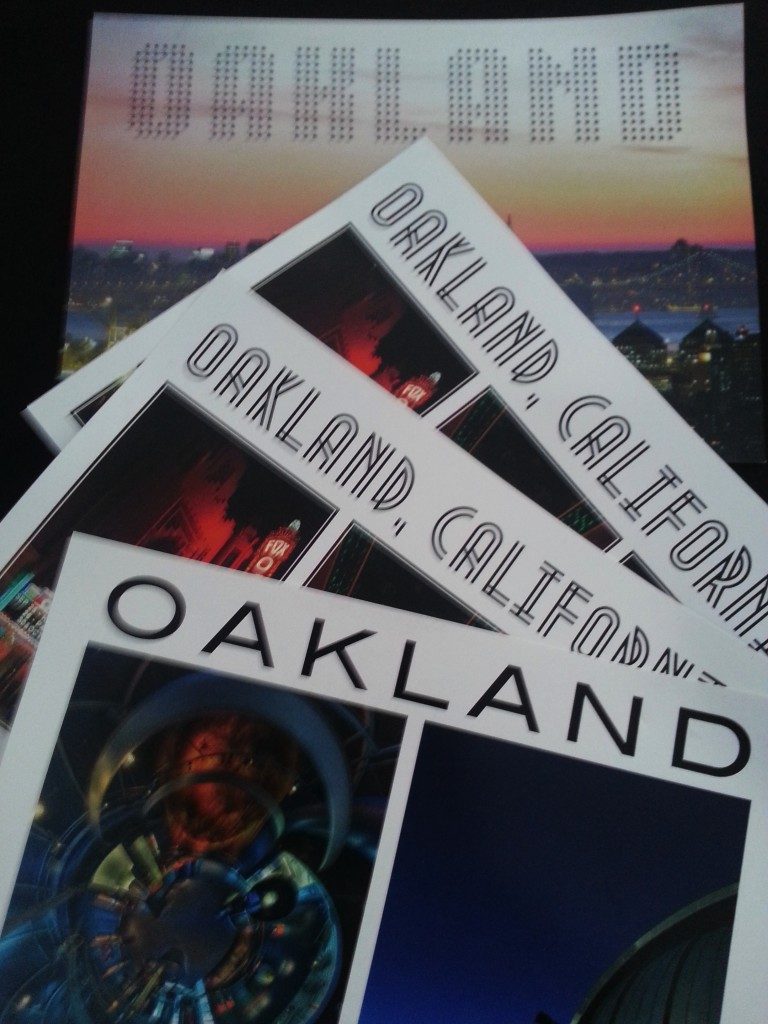
Sunset Over The Pacific Ocean From Venice, California
Hi all! So sorry I haven’t posted for a couple of days. I arrived in Los Angeles on Monday…

5 Ways to Plan Your Vacation
People often ask me how do I plan a trip. Here are 5 ways to plan your vacation that are…
This is the train STATION?? Oh my god… So gorgeous. Moscow has never even crossed my mind as a possible travel destination but this is gorgeous…Hmmm… LOL
I know, right? We spent several hours in the metro, just marveling at the beauty of each one. Thanks for stopping by!
Leave a Reply Cancel reply
Your email address will not be published. Required fields are marked *
- Car Rentals
- Airport Transfers
- Attractions & Tours
- Bundle & Save
- Custom Trips
- Destinations
- Trip.com Rewards
Batutnyy Tsentr Voskhod Elektrostal
Recommendations near batutnyy tsentr voskhod elektrostal, batutnyy tsentr voskhod elektrostal reviews: insider insights and visitor experiences, you might also like.
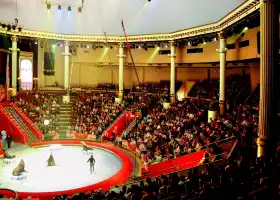
Moscow Circus on Ice

The State Tretyakov Gallery

State Historical Museum
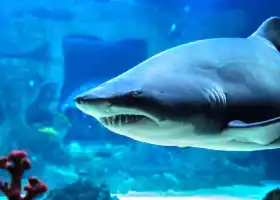
Nearby Attractions
Popular types of attractions in elektrostal', popular restaurants in elektrostal', popular destinations, recommended attractions at popular destinations, popular ranked lists, more things to do in elektrostal'.
- Customer Support
- Service Guarantee
- More Service Info
- Website Feedback
- About Trip.com
- Terms & Conditions
- Privacy Statement
- Do Not Sell My Personal Information
- About Trip.com Group
Other Services
- Investor Relations
- Affiliate Program
- List My Property
- Become a Supplier
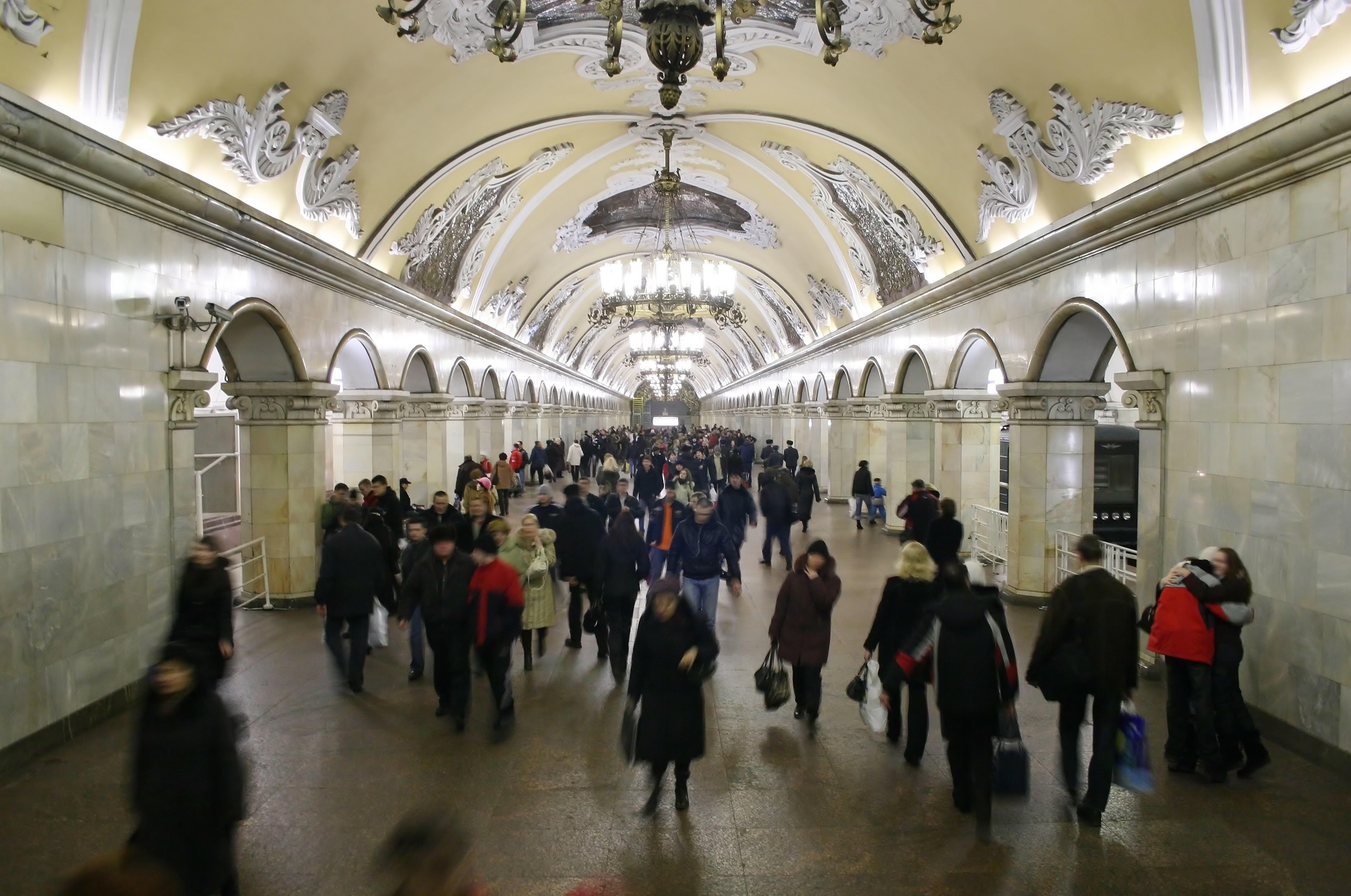
Guided Walking Tour of the Moscow Metro
Description, good to know.
- Pricing details
Departure place
You would like, admiring the frescoes in kurskaya and komsomolskaya metro stations, marvelling at the architecture of the moscow metro, listening to your guide's commentary, essential information *, duration 1 hour 50 minutes, starting time 2:00 pm.
Set off to discover the most breathtaking stops on Moscow’s beautiful metro system on this walking tour.
Some of the stops on the Moscow metro are real masterpieces. Head underground and admire the Moscow metro with your guide.
During your guided tour, you will get to admire the Ploshchad Revolyutsii , designed by the architect Dushkin. There are no fewer than 72 sculptures in this station!
You will then explore Kurskaya station, built in 1938. The design, mosaics and slogans will immerse you in the era of Stalin. You will also see the frescoes depicting Russian victories in Komsomolskaya station.
Then, continue to one of Moscow’s must-see metro stations, Novoslobodskaya , which resembles an underground palace: marble, stained glass windows...
Join your guide to explore the most lavish and important metro stops in Moscow!
- Availability: every day (excluding exceptional dates)
- Duration: 1 hr. 50 mins approx.
- Departure point: The Kremlin
- Languages: English
- Please wear comfortable shoes
- Metro tickets are included for the metro stations visited during the activity
- A valid student card will be requested from participants who have booked the reduced student tariff
- A minimum of 2 participants is required to book this activity
Price includes
- Metro tickets
- The services of an English-speaking tour guide
- The guided tour of the Moscow metro
Price doesn’t include
- Access to stations not included in the tour
- Hotel pick-up/drop-off
- Tips (optional)
- All other extras
Trains Moscow to Elektrostal: Times, Prices and Tickets
- Train Times
- Seasonality
- Accommodations
Moscow to Elektrostal by train
The journey from Moscow to Elektrostal by train is 32.44 mi and takes 2 hr 7 min. There are 71 connections per day, with the first departure at 12:15 AM and the last at 11:46 PM. It is possible to travel from Moscow to Elektrostal by train for as little as or as much as . The best price for this journey is .
Get from Moscow to Elektrostal with Virail
Virail's search tool will provide you with the options you need when you want to go from Moscow to Elektrostal. All you need to do is enter the dates of your planned journey, and let us take care of everything else. Our engine does the hard work, searching through thousands of routes offered by our trusted travel partners to show you options for traveling by train, bus, plane, or carpool. You can filter the results to suit your needs. There are a number of filtering options, including price, one-way or round trip, departure or arrival time, duration of journey, or number of connections. Soon you'll find the best choice for your journey. When you're ready, Virail will transfer you to the provider's website to complete the booking. No matter where you're going, get there with Virail.
How can I find the cheapest train tickets to get from Moscow to Elektrostal?
Prices will vary when you travel from Moscow to Elektrostal. On average, though, you'll pay about for a train ticket. You can find train tickets for prices as low as , but it may require some flexibility with your travel plans. If you're looking for a low price, you may need to prepare to spend more time in transit. You can also often find cheaper train tickets at particular times of day, or on certain days of the week. Of course, ticket prices often change during the year, too; expect to pay more in peak season. For the lowest prices, it's usually best to make your reservation in advance. Be careful, though, as many providers do not offer refunds or exchanges on their cheapest train tickets. Unfortunately, no price was found for your trip from Moscow to Elektrostal. Selecting a new departure or arrival city, without dramatically changing your itinerary could help you find price results. Prices will vary when you travel from Moscow to Elektrostal. On average, though, you'll pay about for a train ticket. If you're looking for a low price, you may need to prepare to spend more time in transit. You can also often find cheaper train tickets at particular times of day, or on certain days of the week. Of course, ticket prices often change during the year, too; expect to pay more in peak season. For the lowest prices, it's usually best to make your reservation in advance. Be careful, though, as many providers do not offer refunds or exchanges on their cheapest train tickets.
How long does it take to get from Moscow to Elektrostal by train?
The journey between Moscow and Elektrostal by train is approximately 32.44 mi. It will take you more or less 2 hr 7 min to complete this journey. This average figure does not take into account any delays that might arise on your route in exceptional circumstances. If you are planning to make a connection or operating on a tight schedule, give yourself plenty of time. The distance between Moscow and Elektrostal is around 32.44 mi. Depending on the exact route and provider you travel with, your journey time can vary. On average, this journey will take approximately 2 hr 7 min. However, the fastest routes between Moscow and Elektrostal take 1 hr 3 min. If a fast journey is a priority for you when traveling, look out for express services that may get you there faster. Some flexibility may be necessary when booking. Often, these services only leave at particular times of day - or even on certain days of the week. You may also find a faster journey by taking an indirect route and connecting in another station along the way.
How many journeys from Moscow to Elektrostal are there every day?
On average, there are 71 daily departures from Moscow to Elektrostal. However, there may be more or less on different days. Providers' timetables can change on certain days of the week or public holidays, and many also vary at particular times of year. Some providers change their schedules during the summer season, for example. At very busy times, there may be up to departures each day. The providers that travel along this route include , and each operates according to their own specific schedules. As a traveler, you may prefer a direct journey, or you may not mind making changes and connections. If you have heavy suitcases, a direct journey could be best; otherwise, you might be able to save money and enjoy more flexibility by making a change along the way. Every day, there are an average of 18 departures from Moscow which travel directly to Elektrostal. There are 53 journeys with one change or more. Unfortunately, no connection was found for your trip from Moscow to Elektrostal. Selecting a new departure or arrival city, without dramatically changing your itinerary could help you find connections.
Book in advance and save
If you're looking for the best deal for your trip from Moscow to Elektrostal, booking train tickets in advance is a great way to save money, but keep in mind that advance tickets are usually not available until 3 months before your travel date.
Stay flexible with your travel time and explore off-peak journeys
Planning your trips around off-peak travel times not only means that you'll be able to avoid the crowds, but can also end up saving you money. Being flexible with your schedule and considering alternative routes or times will significantly impact the amount of money you spend on getting from Moscow to Elektrostal.
Always check special offers
Checking on the latest deals can help save a lot of money, making it worth taking the time to browse and compare prices. So make sure you get the best deal on your ticket and take advantage of special fares for children, youth and seniors as well as discounts for groups.
Unlock the potential of slower trains or connecting trains
If you're planning a trip with some flexible time, why not opt for the scenic route? Taking slower trains or connecting trains that make more stops may save you money on your ticket – definitely worth considering if it fits in your schedule.
Best time to book cheap train tickets from Moscow to Elektrostal
The cheapest Moscow - Elektrostal train tickets can be found for as low as $35.01 if you’re lucky, or $54.00 on average. The most expensive ticket can cost as much as $77.49.
Find the best day to travel to Elektrostal by train
When travelling to Elektrostal by train, if you want to avoid crowds you can check how frequently our customers are travelling in the next 30-days using the graph below. On average, the peak hours to travel are between 6:30am and 9am in the morning, or between 4pm and 7pm in the evening. Please keep this in mind when travelling to your point of departure as you may need some extra time to arrive, particularly in big cities!
Moscow to Elektrostal CO2 Emissions by Train

Anything we can improve?
Frequently Asked Questions
Go local from moscow, trending routes, weekend getaways from moscow, international routes from moscow and nearby areas, other destinations from moscow, other popular routes.

IMAGES
VIDEO
COMMENTS
Stone Harbor Wilderness Supply. Based in Grand Marais, Stone Harbor Wilderness Supply offers Boundary Waters canoe day trips starting at $150 per person and a four-day guided kayak camping trip on sprawling Saganaga Lake starting at $725 per person. Photo: Britta Bjur // @brittabjur.
The trail-savvy guides of Boundary Waters Guide Service unlock the mysteries of the Boundary Waters by sharing canoeing and camping skills, fishing know-how, local history, and a naturalist perspective. Let us customize your BWCA Wilderness adventure! Our professionally guided camping trips are fully outfitted with the best canoes, camping ...
Every Wilderness Inquiry trip ensures your adventure is the best it can be. Decades of experience in combination with top notch food and gear make Wilderness Inquiry BWCA trips an exceptional value. Our classic 5-day Boundary Waters Canoe Area Paddle Adventure is the quintessential guided canoe trip. Paddle lightweight Wenonah kevlar canoes and ...
Take a guided overnight canoe trip into the Boundary Waters Canoe Area Wilderness, one of National Geographic's "50 Places of a Lifetime." ... Border Lakes Tour Company is authorized to operate guided tours in the Boundary Waters Canoe Area Wilderness and Superior National Forest under a special use permit from the United States Forest ...
Overview: Boundary Waters Guide Service provides fully outfitted and professionally guided BWCAW canoe camping and day trip adventures for families and friends. Our trips include knowledgeable, cheerful, local guides. Our guides make the difference. We unlock the mysteries of the Boundary Waters by sharing. paddling and camping skills, fishing ...
Guided Wilderness Trips: For many Boundary Waters vacationers, fishing is only half of the reason for visiting this vast wilderness area. Adventure and exploration or rest and relaxation are what many visitors are seeking. ... To reserve a guided trip call us and we will discuss the type of trip you want and have you speak with your guide. 218 ...
This full Boundary Waters Outfitting package is our specialty. Guided Overnight Canoe Trips. We help you map your route and equip your entire group with high quality gear. Canoe & Food Package. Canoeing Boundary Waters and Quetico Park in Ely is our passion. Partial Canoe. We can help Boundary Water adventurers if they have a few missing items.
Accessible primarily by canoe, the Boundary Waters in northern Minnesota is one of America's most beautiful and remote adventures. Plan your first trip using this four-day beginner-friendly itinerary. One of the hardest things about planning your first Boundary Waters trip is deciding where to go within the vast preserve's 1,200 miles of canoe routes, 11 hiking trails and approximately 2,000 ...
of Trip to Take. There are many ways to explore the Boundary Waters, but the two most popular modes of travel are hiking and canoeing. Canoeing. Northeastern Minnesota is created for canoeing. This is the best canoe country in the United States, a place where each year thousands of lives are transformed. Hiking.
A guided Boundary Waters canoe trip that includes sight-seeing, bird watching, photography, and wildlife viewing for white tail deer, wolves, fox, and other animals in the Boundary Waters are popular choices. Guided BWCA canoe trips may also focus on the beauty and peacefulness of the BWCA, viewing its waterfalls, and viewing pictographs. ...
No routes match. Get Expert Advice from an Outfitter Learn More. Discover your next Boundary Waters adventure with our easy-to-use BWCA route finding tool! Complete with entry points, route info and more!
Bring one of our expert guides along for the fishing experience of a lifetime. Day trips and overnight trips available. Enhance your Canoe Trip with a Boundary Waters Guide. BWCA Guided Fishing Trips, Day Trips, and Customized Trips in Ely, MN since 1979. Guided Canoe Trips.
60 days before your trip, you should: Decide on a menu and split up food-buying duties. Make one person responsible for buying all the breakfast food, another for lunch, and a third for dinner. Make reservations for any gear you might need with the outfitter of your choice.
Contact Moose Track Adventures for superior Boundary Waters Canoe Guide Services in Ely today at 218-265-4106. Moosetrack Adventures Canoe Guides have 10+ years of experience with Boundary Waters guided canoe trips around Ely, MN. Call today 218-365-4106.
If you're a Minnesota resident, an annual fishing license is $25 or $14 for 72 hours. If you're a non-resident, it's $51 annually, $43 for 7 days, or $36 for 72 hours. The reservation system for Boundary Waters permits opens up at 9 a.m. CT on the last Wednesday of January every year on the BWCA recreation.gov website.
The Boundary Waters are a vast and remote wilderness. Located along the U.S.-Canadian border between Minnesota and Ontario, the Boundary Waters have been a popular destination for explorers, adventurers, and active travelers for decades. Spread out over more than a million acres of wilderness, this region is made up of dense forests, sprawling ...
6 Steps of Boundary Waters Trip Planning. 1) Select a date for your trip. 2) Research your BWCAW entry point and plan your trip route. 3) Book your permit. 4) Organize your camping gear. 5) Plan your camping menu. 6) Mentally prepare for your Boundary Waters Trip. Helpful Boundary Waters Trip Planning Information.
Ihere is something special about seeing art and beauty while hundreds of feet underground. The metro in Moscow is breathtakingly beautiful, don't you think?
Explore Batutnyy Tsentr Voskhod Elektrostal in Elektrostal' with photos, map, and reviews. Find nearby hotels and start to plan your trip to Batutnyy Tsentr Voskhod Elektrostal.
Head underground and admire the Moscow metro with your guide. During your guided tour, you will get to admire the Ploshchad Revolyutsii, designed by the architect Dushkin. There are no fewer than 72 sculptures in this station! You will then explore Kurskaya station, built in 1938. The design, mosaics and slogans will immerse you in the era of ...
The journey from Moscow to Elektrostal by train is 32.44 mi and takes 2 hr 7 min. There are 71 connections per day, with the first departure at 12:15 AM and the last at 11:46 PM. It is possible to travel from Moscow to Elektrostal by train for as little as or as much as . The best price for this journey is . Journey Duration.